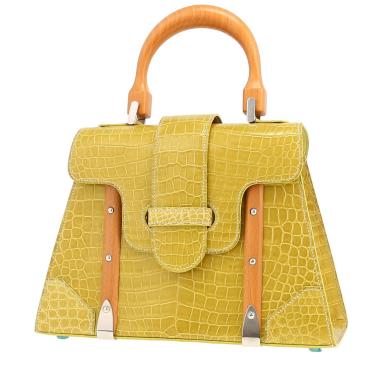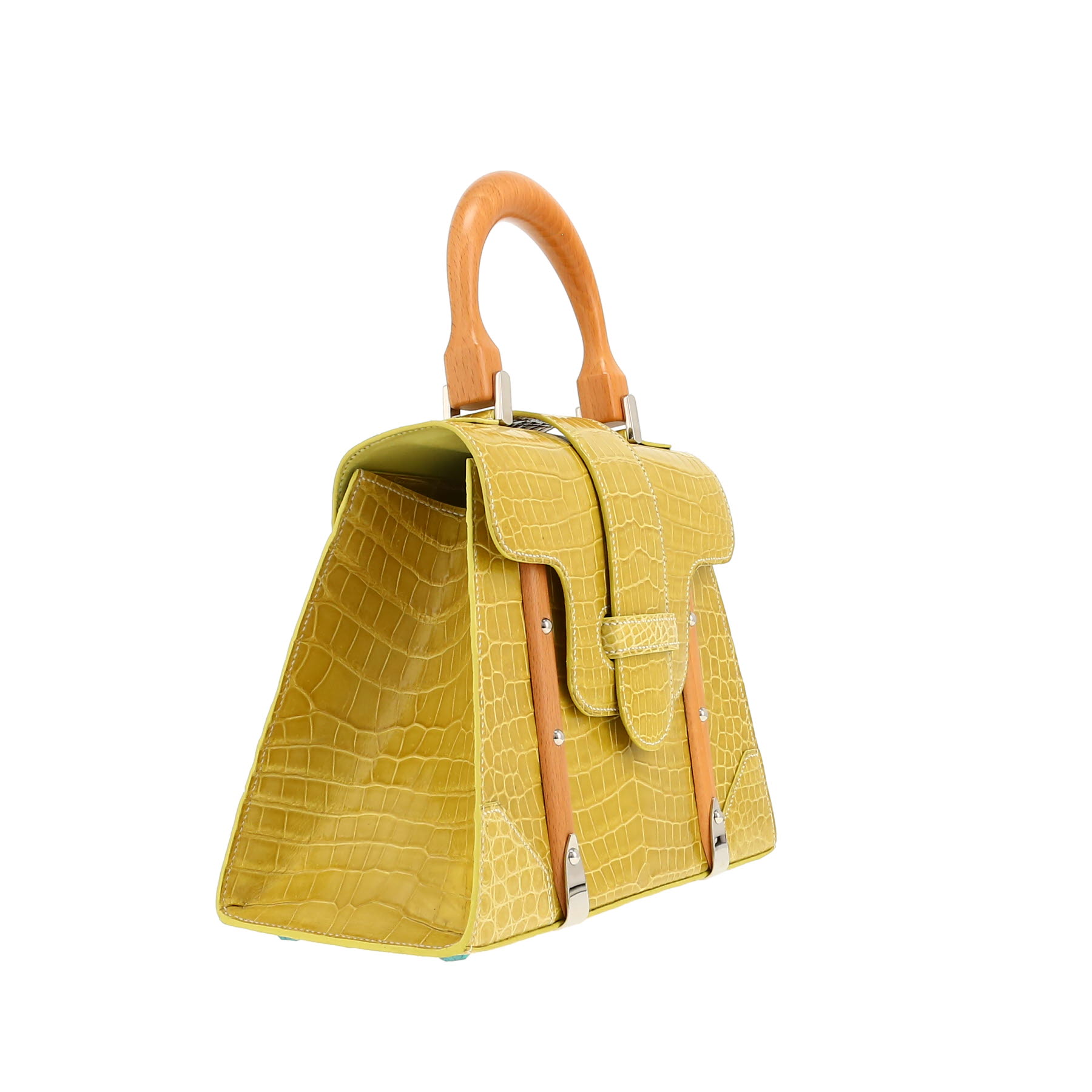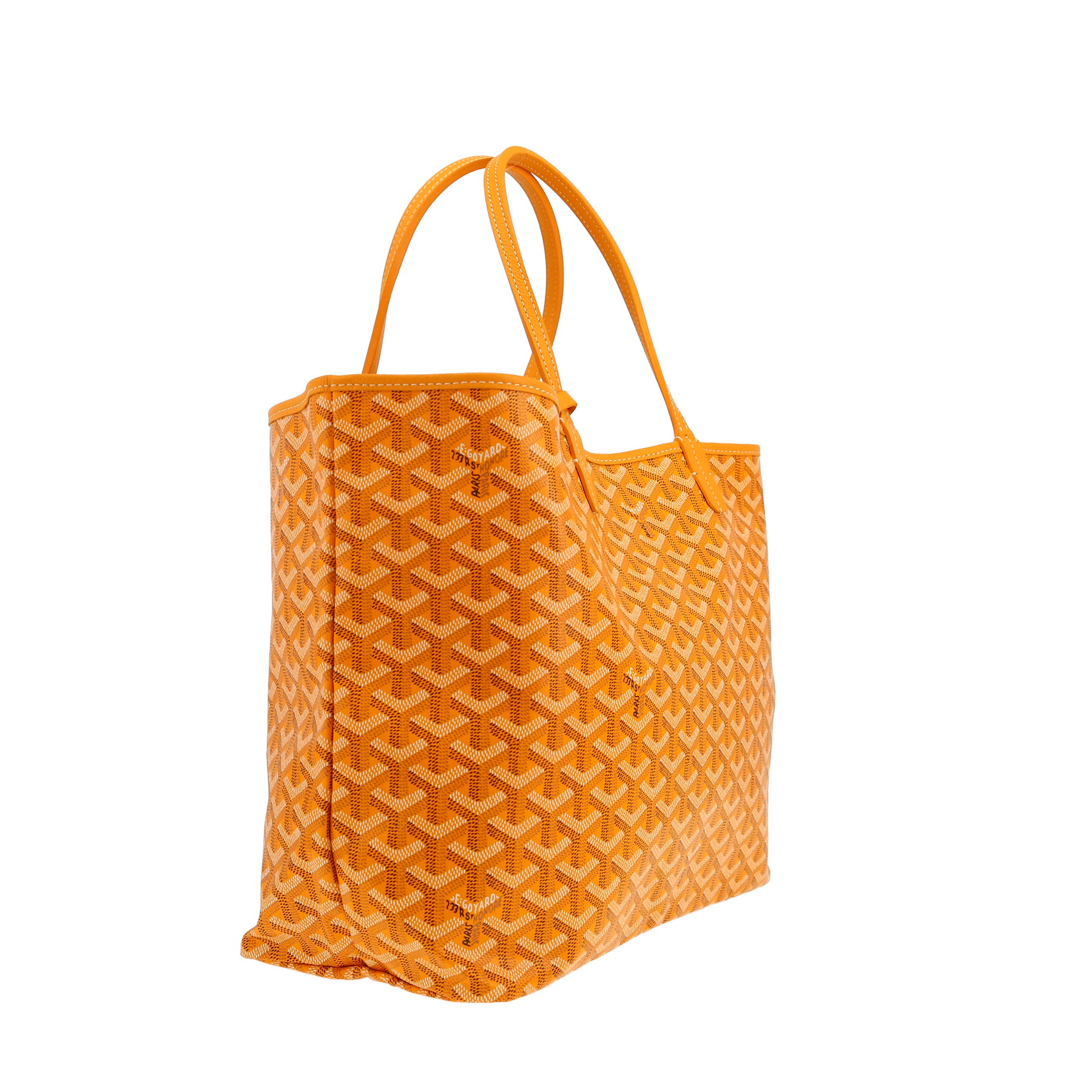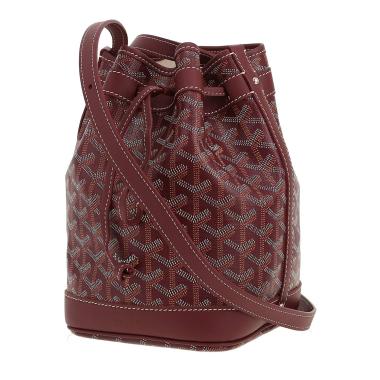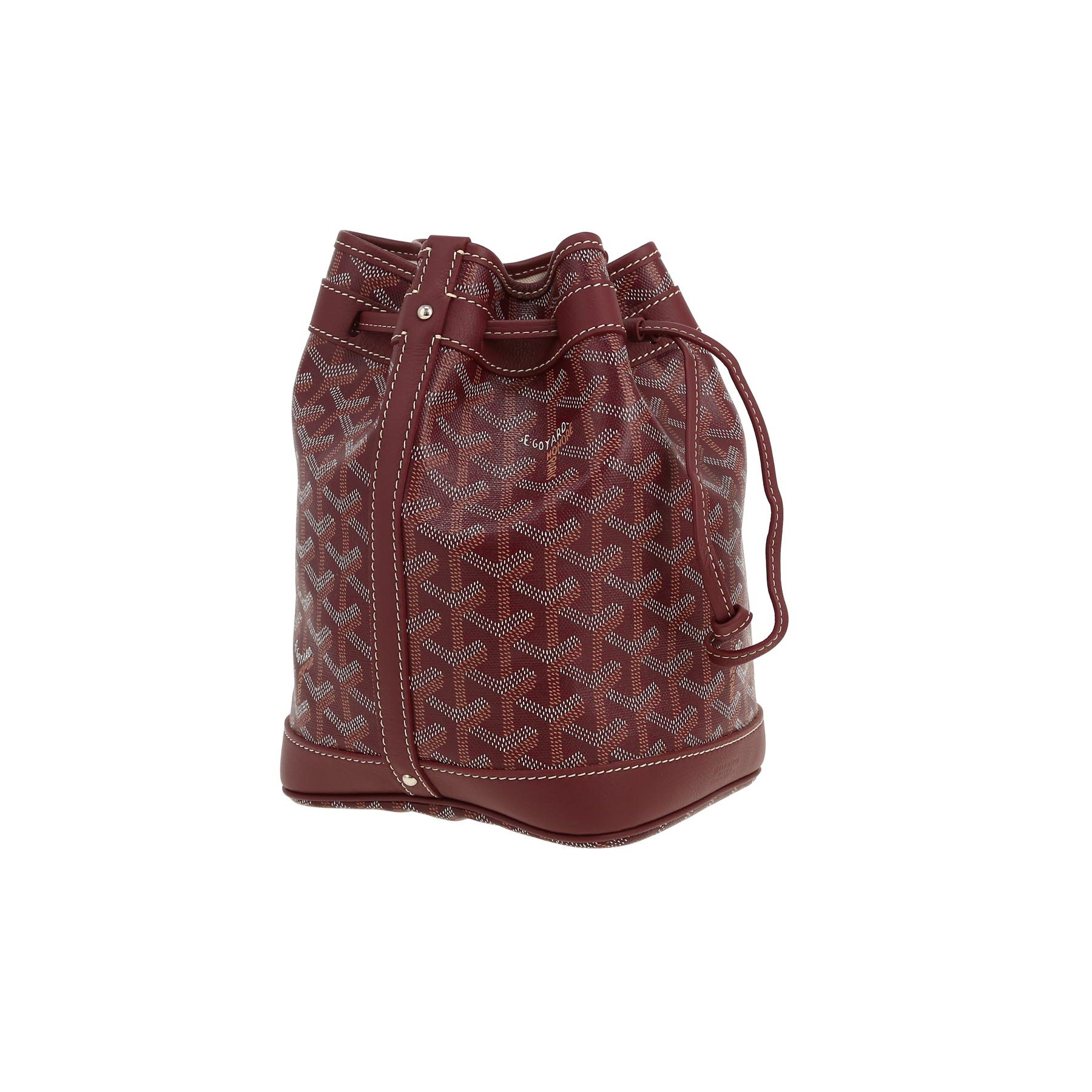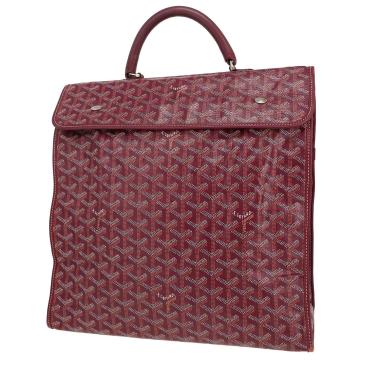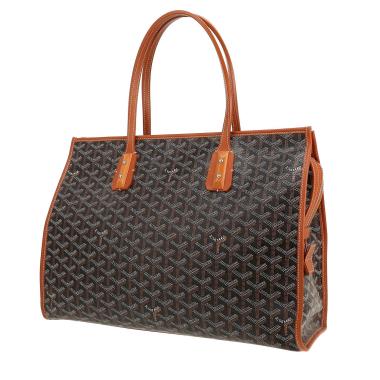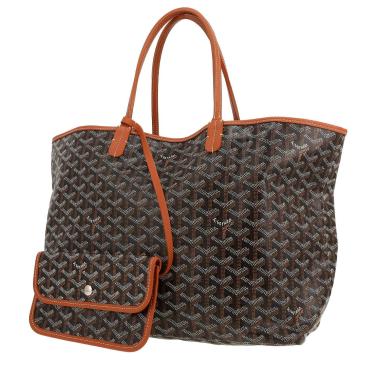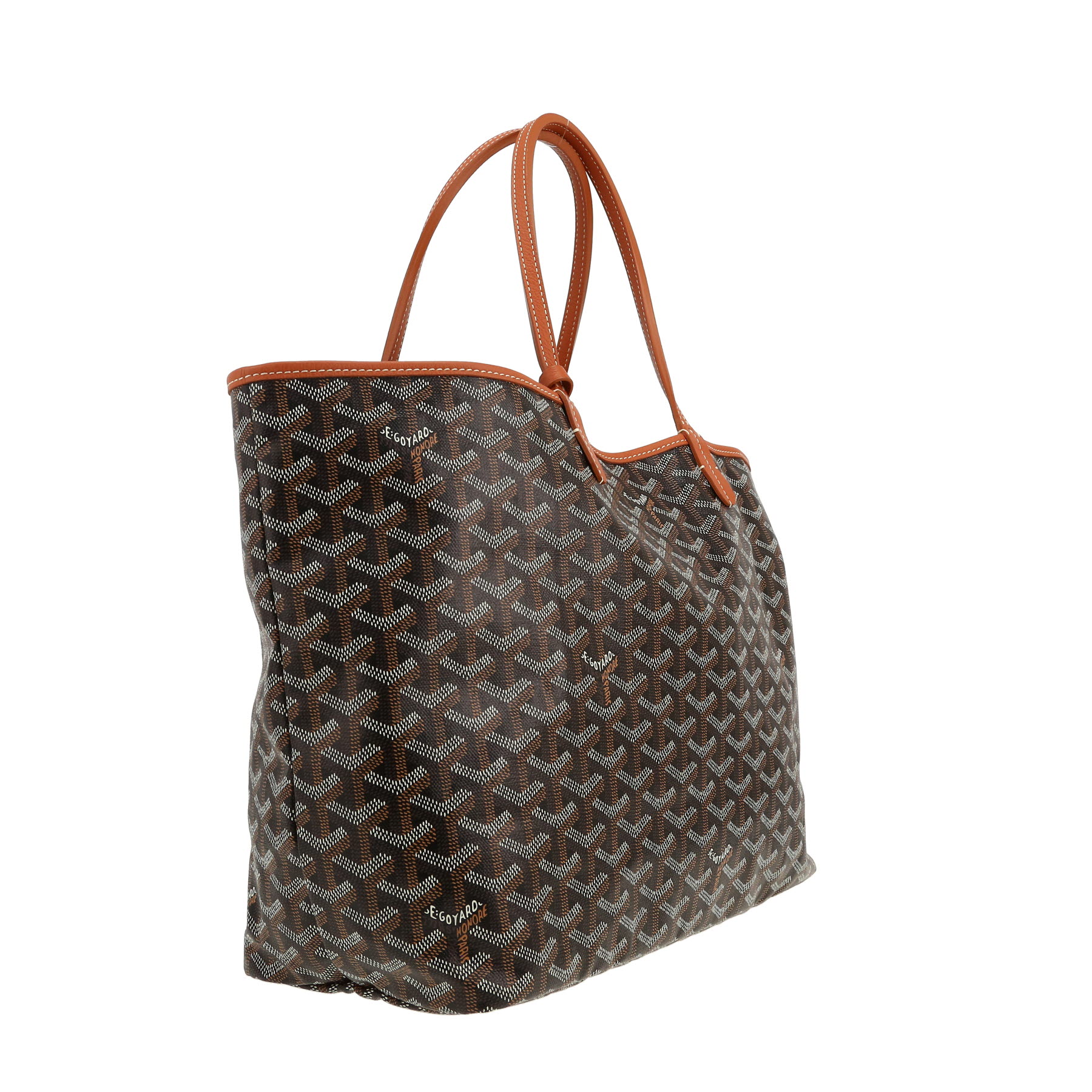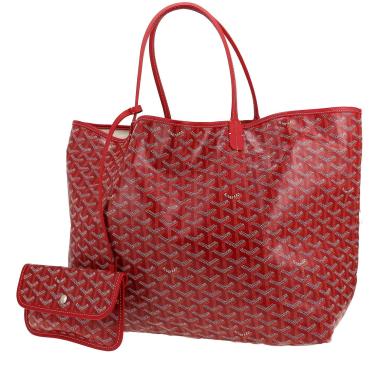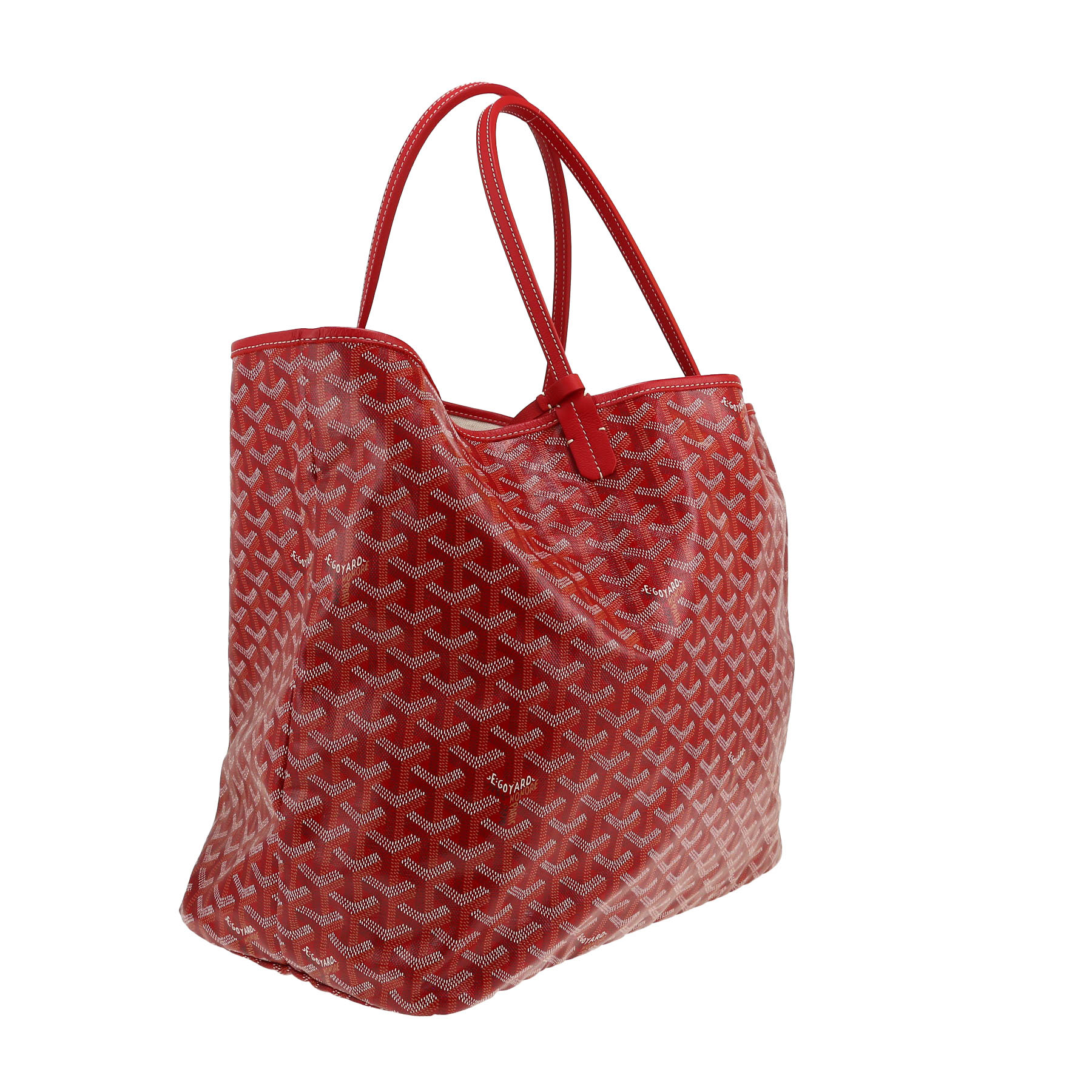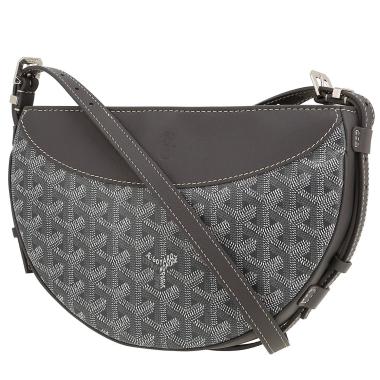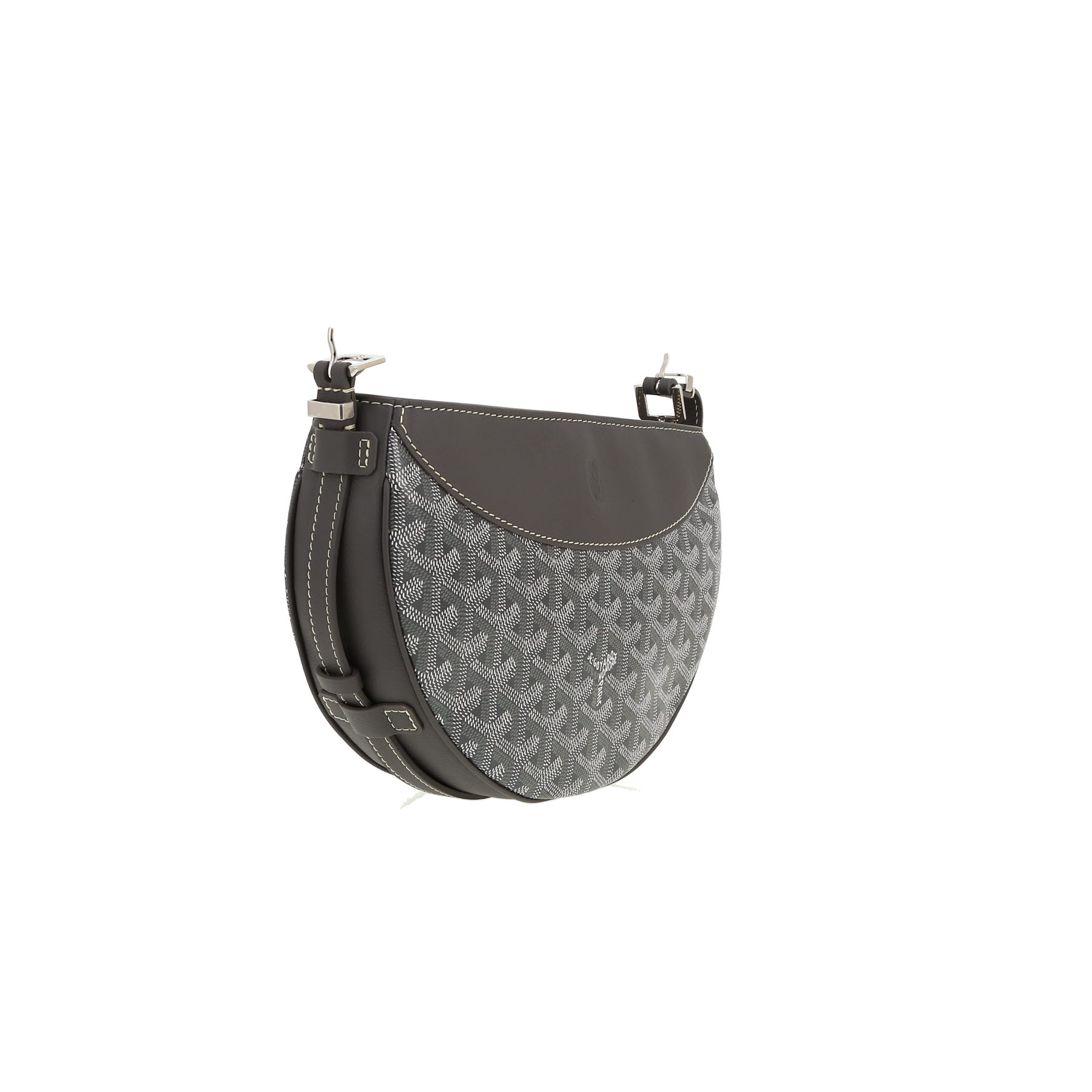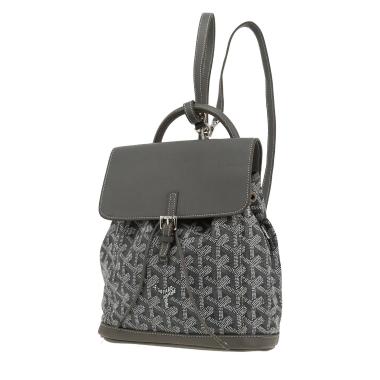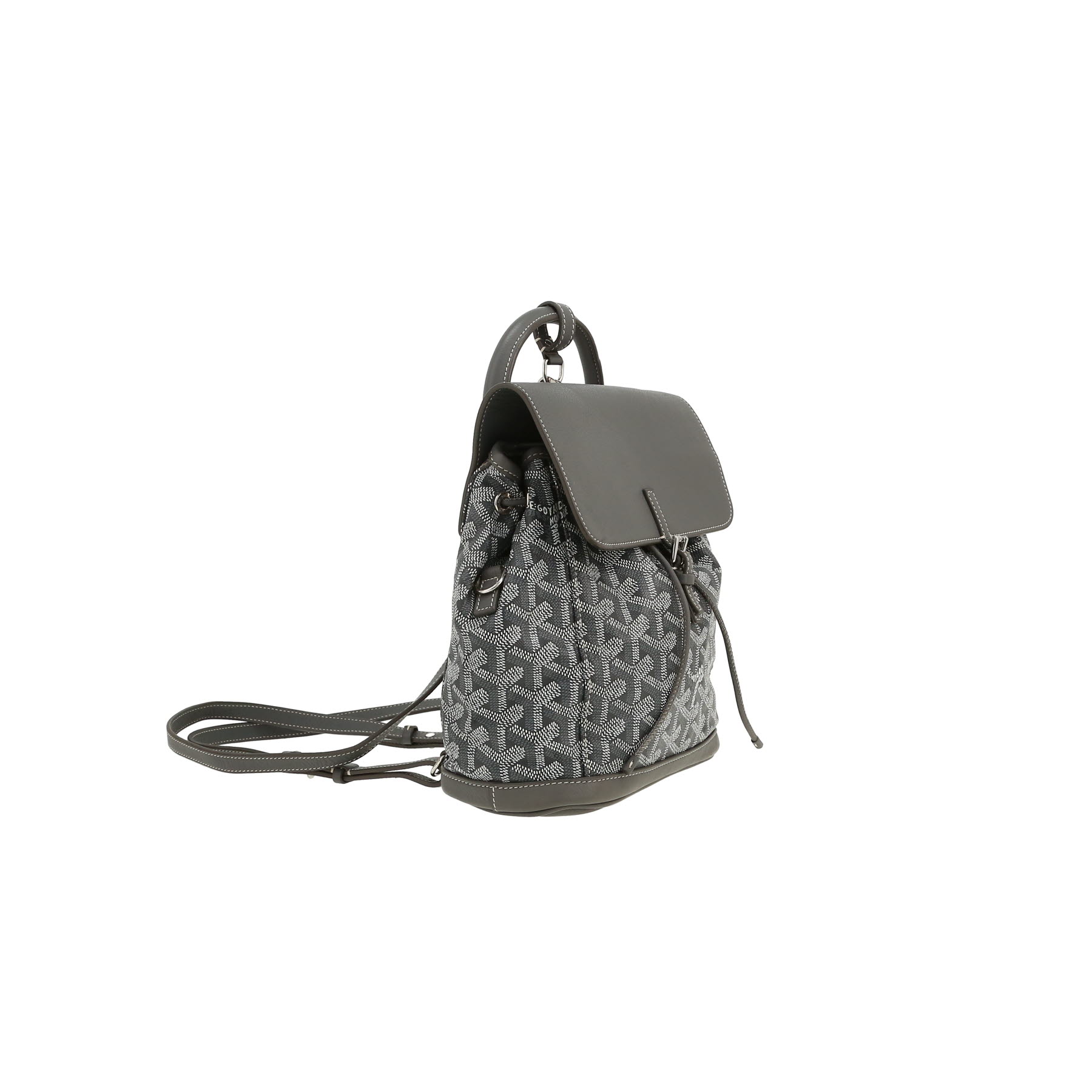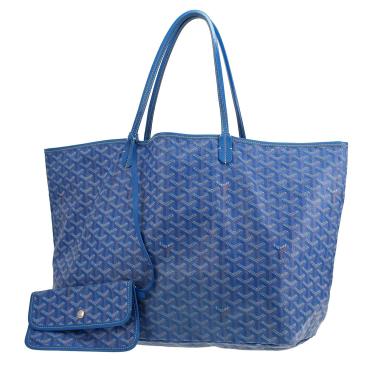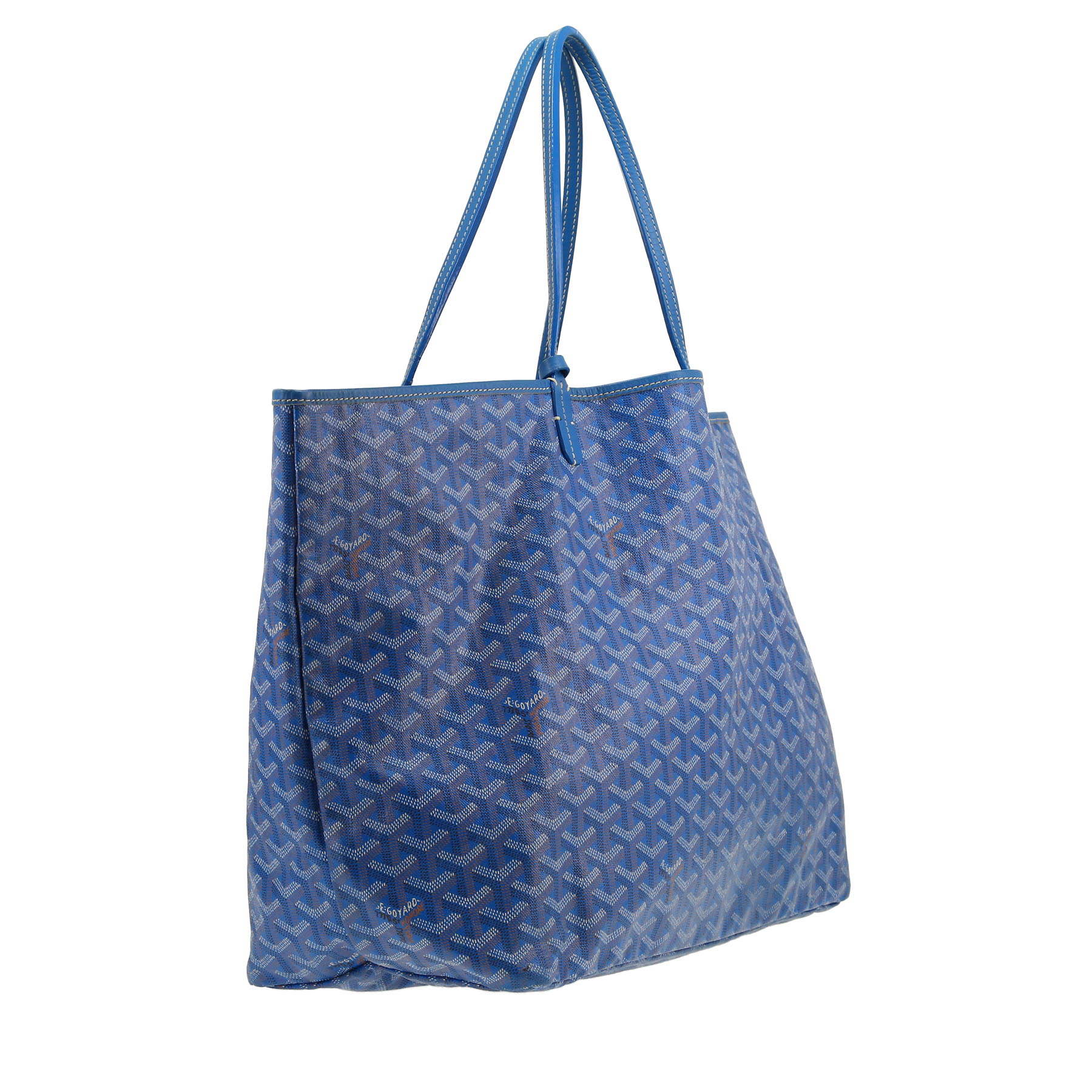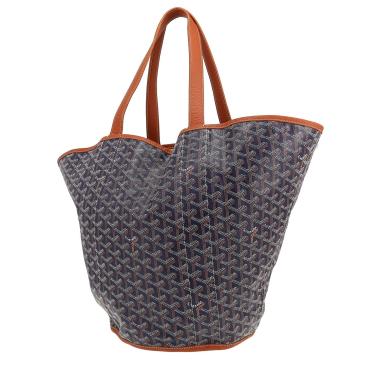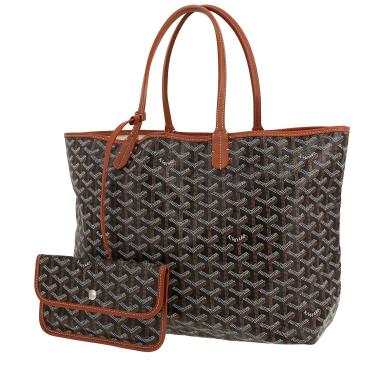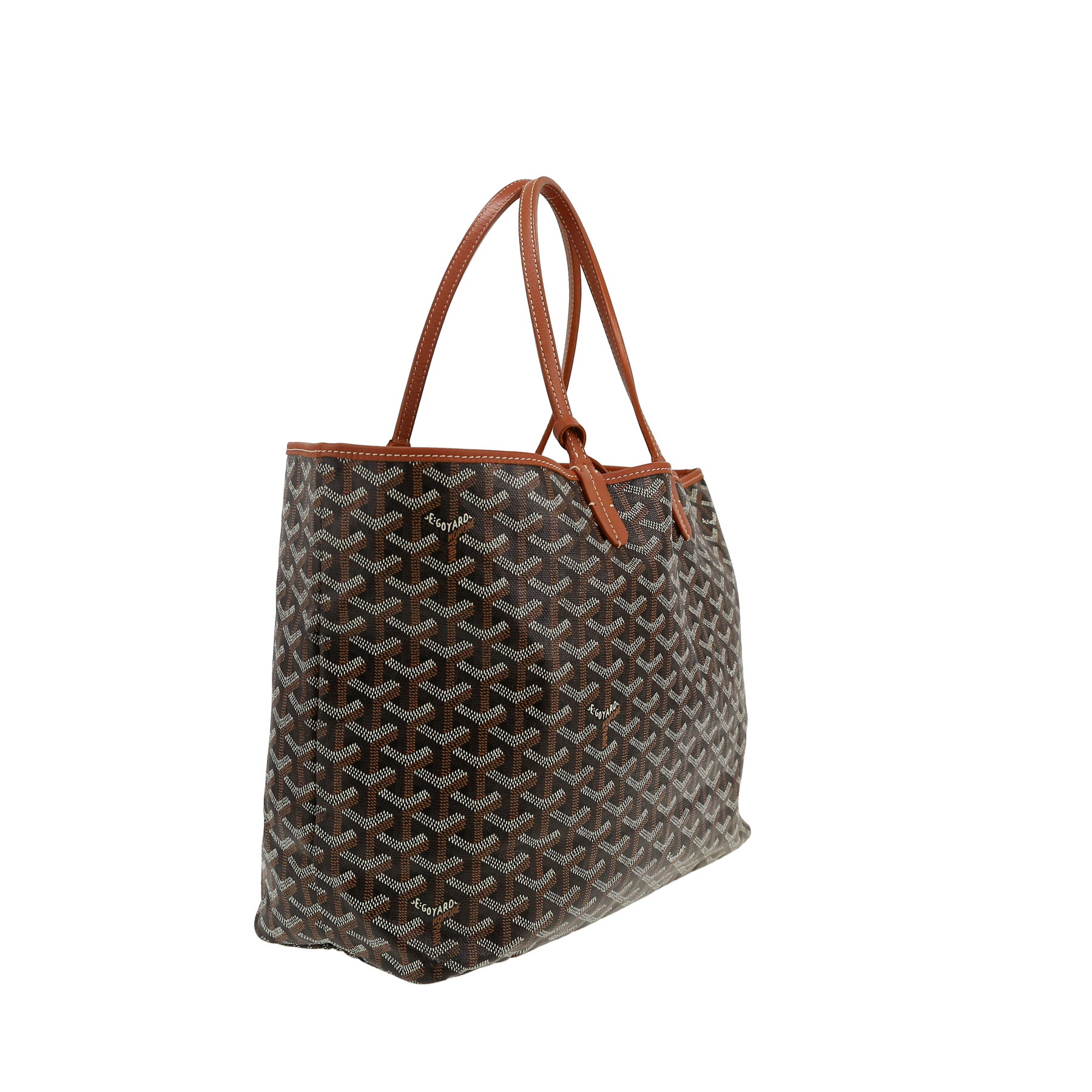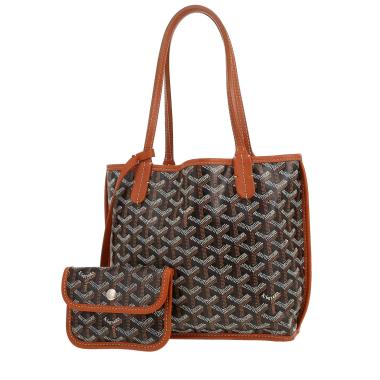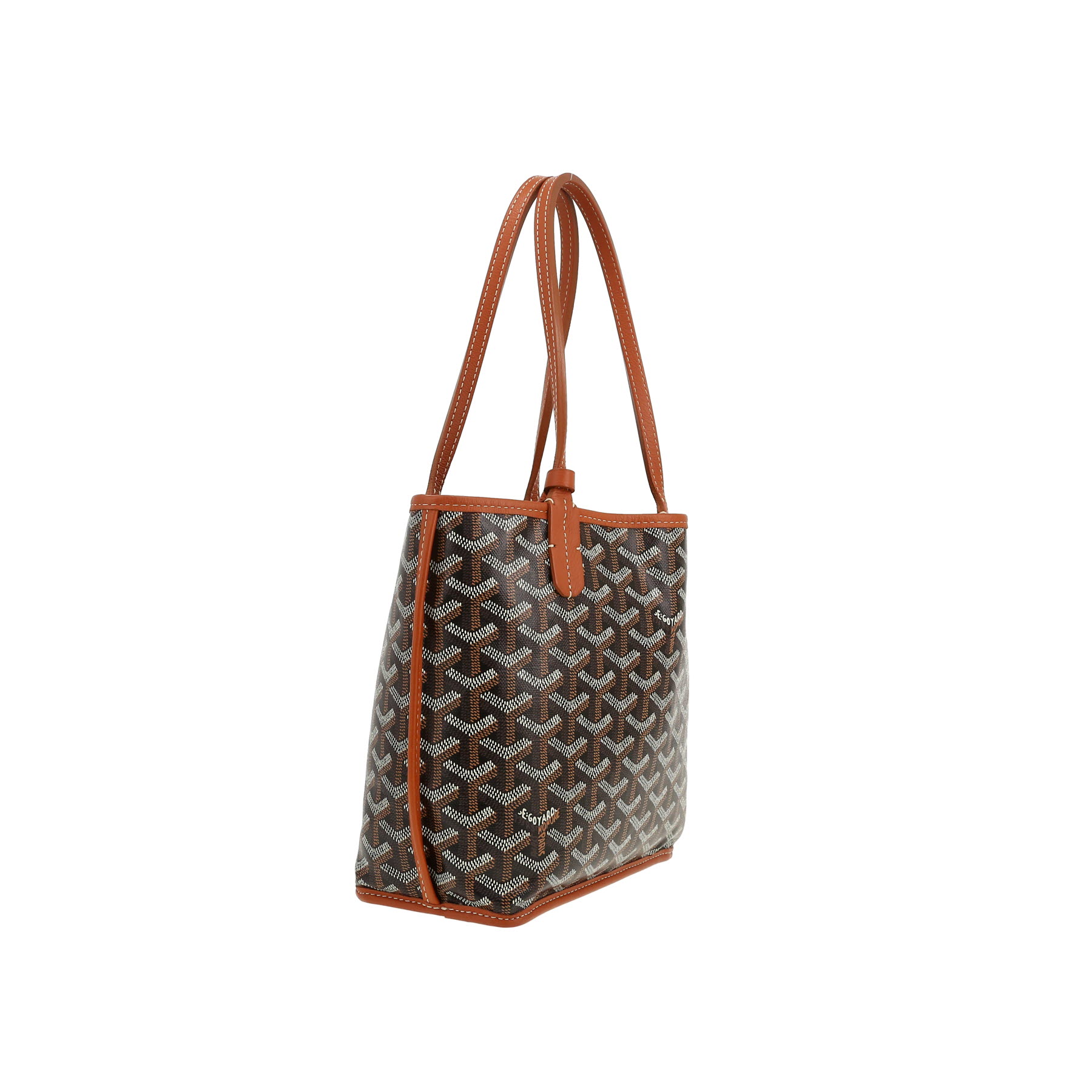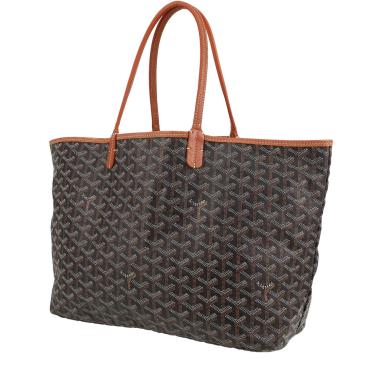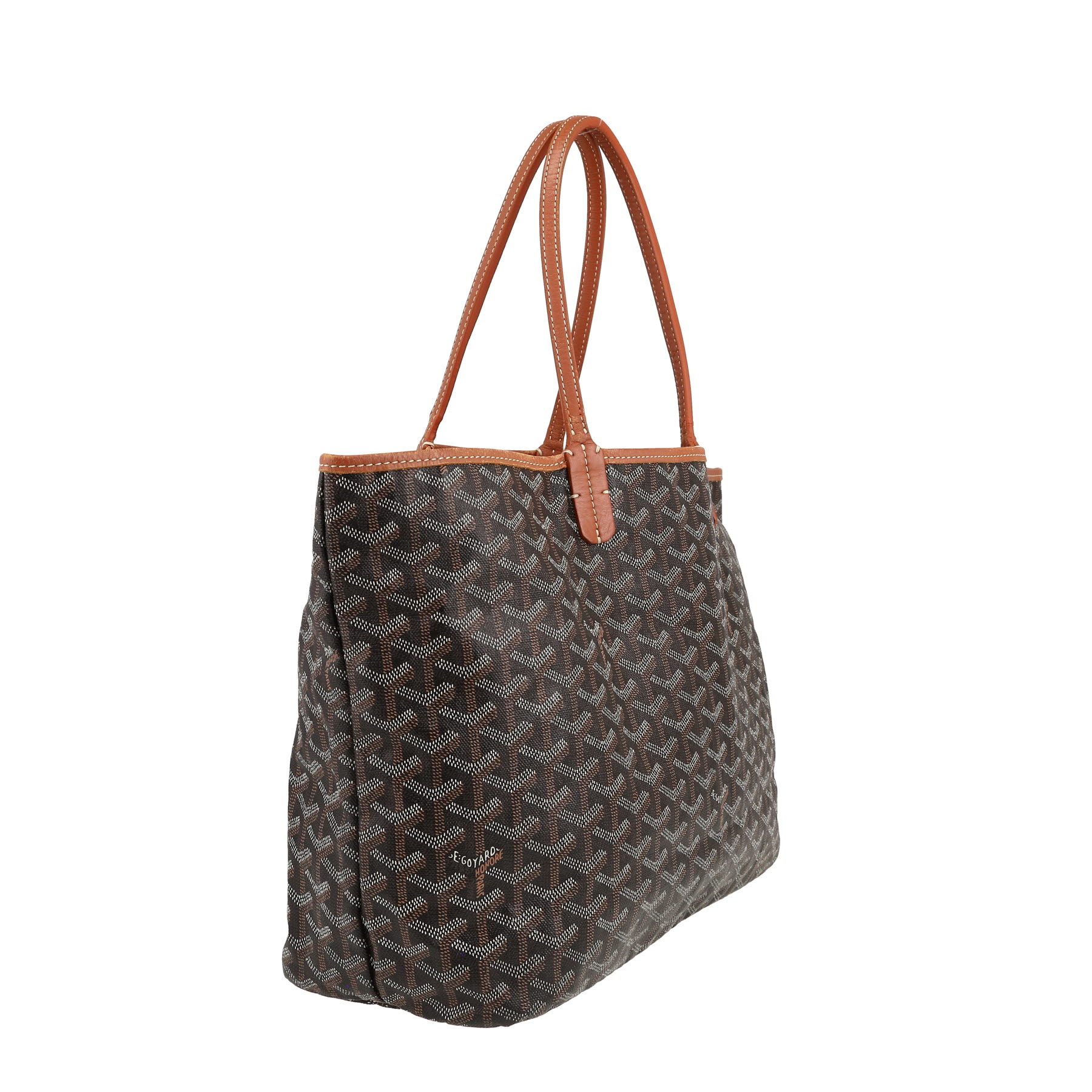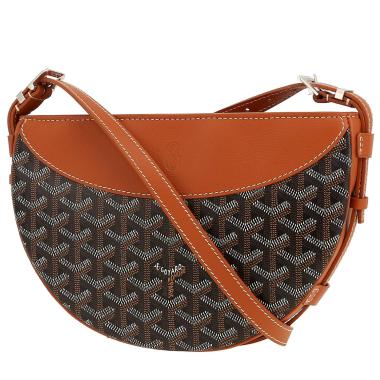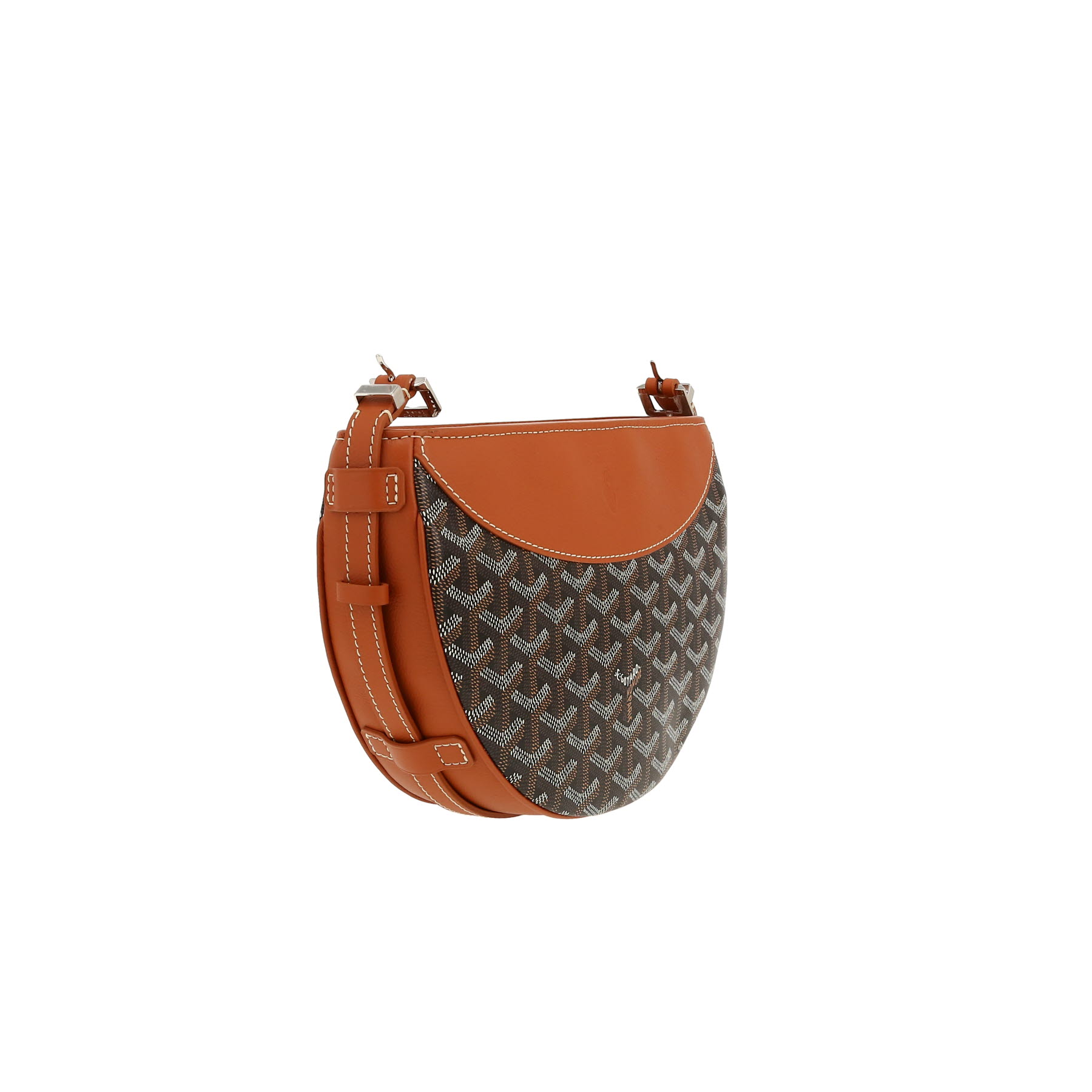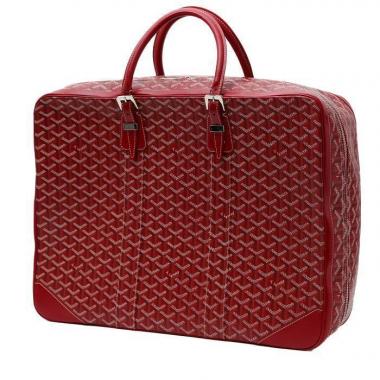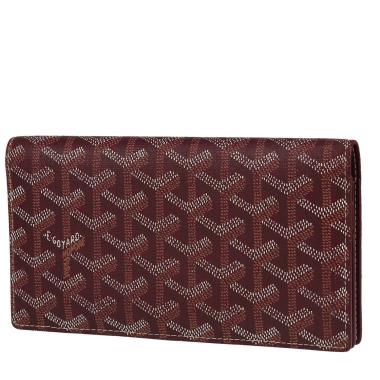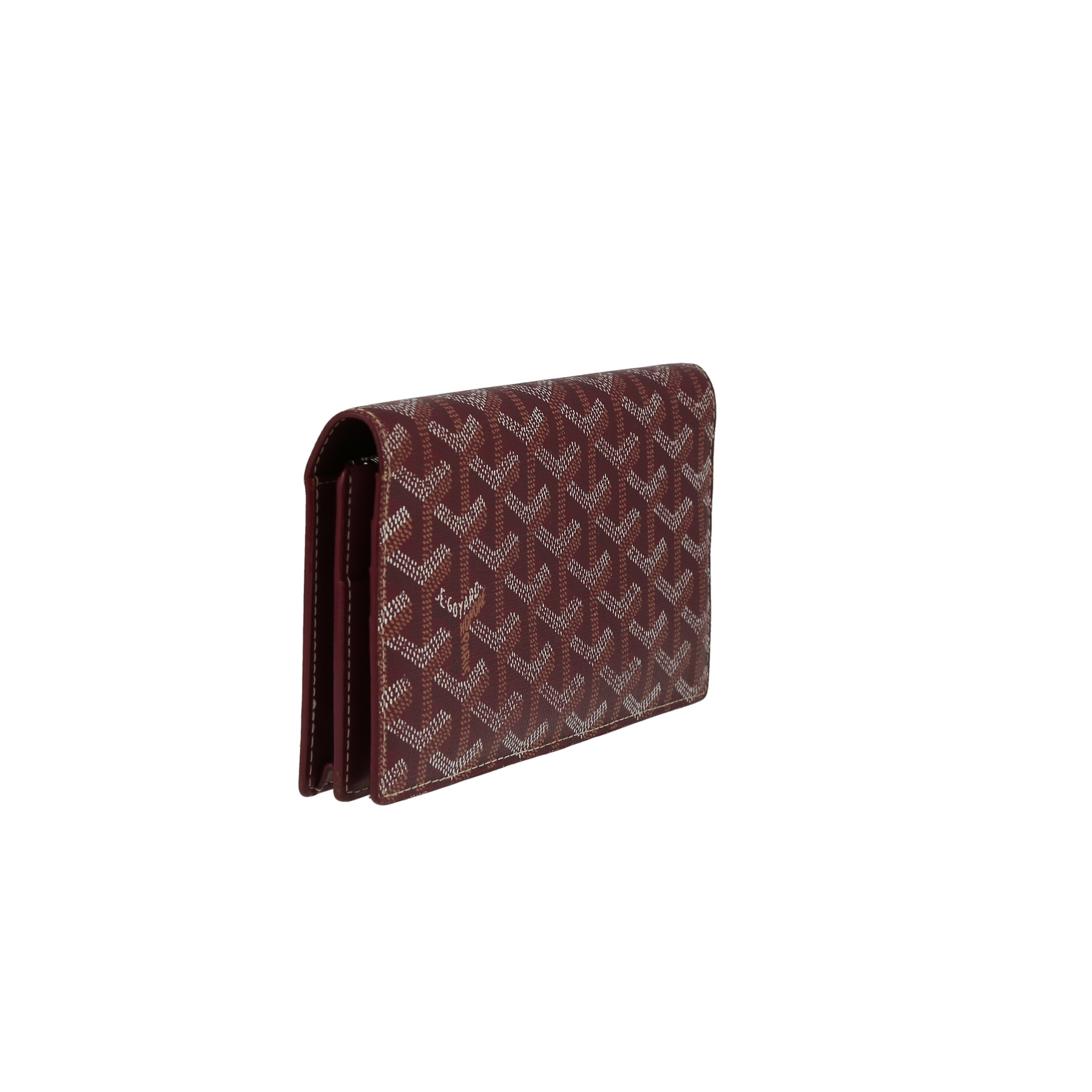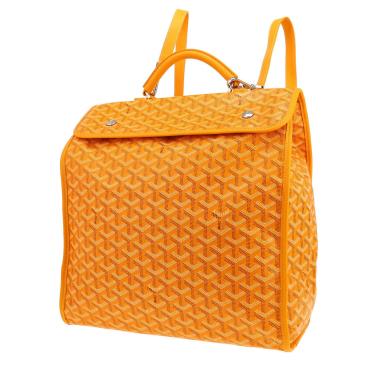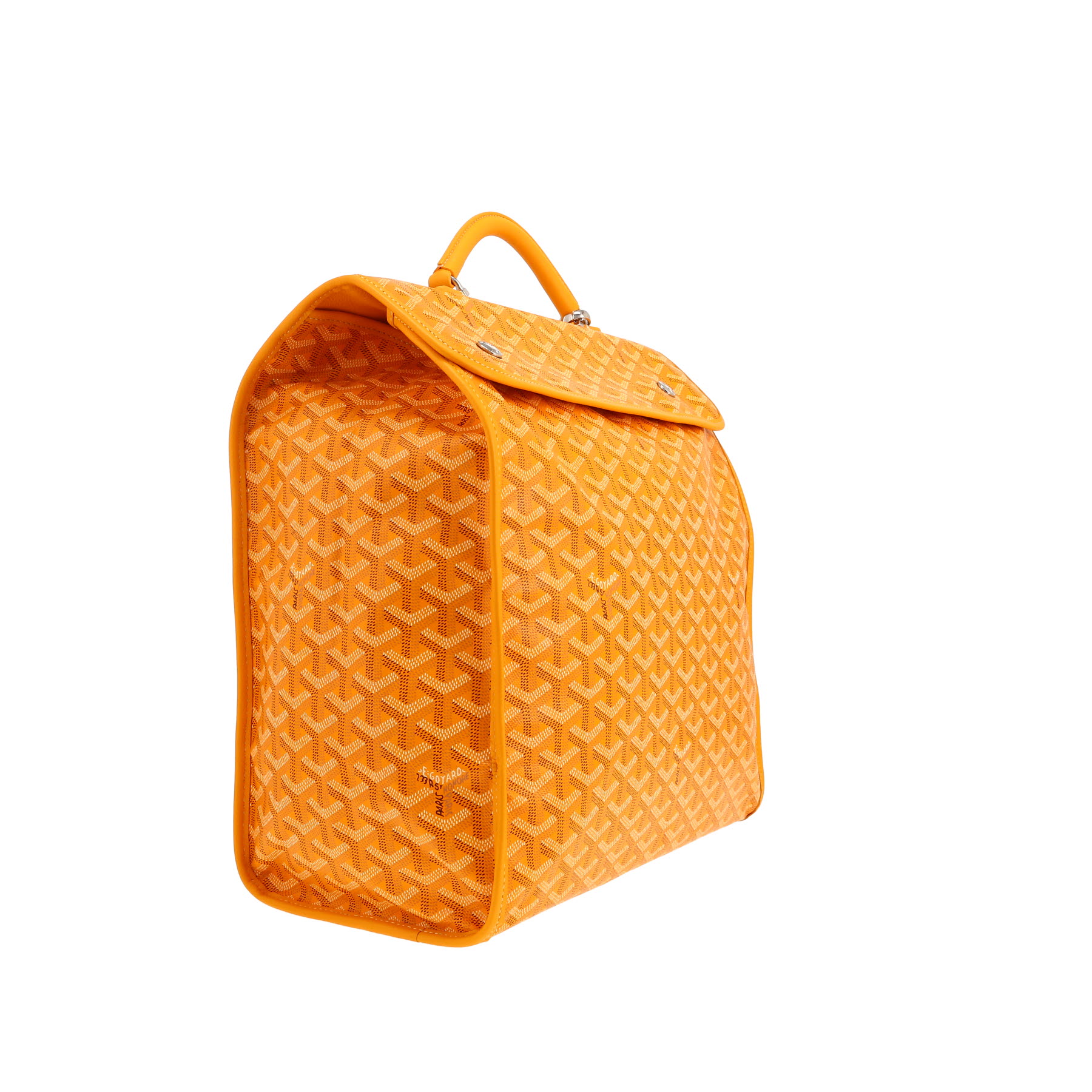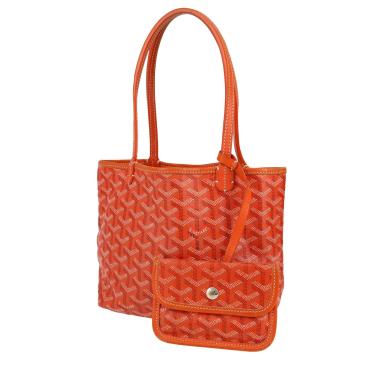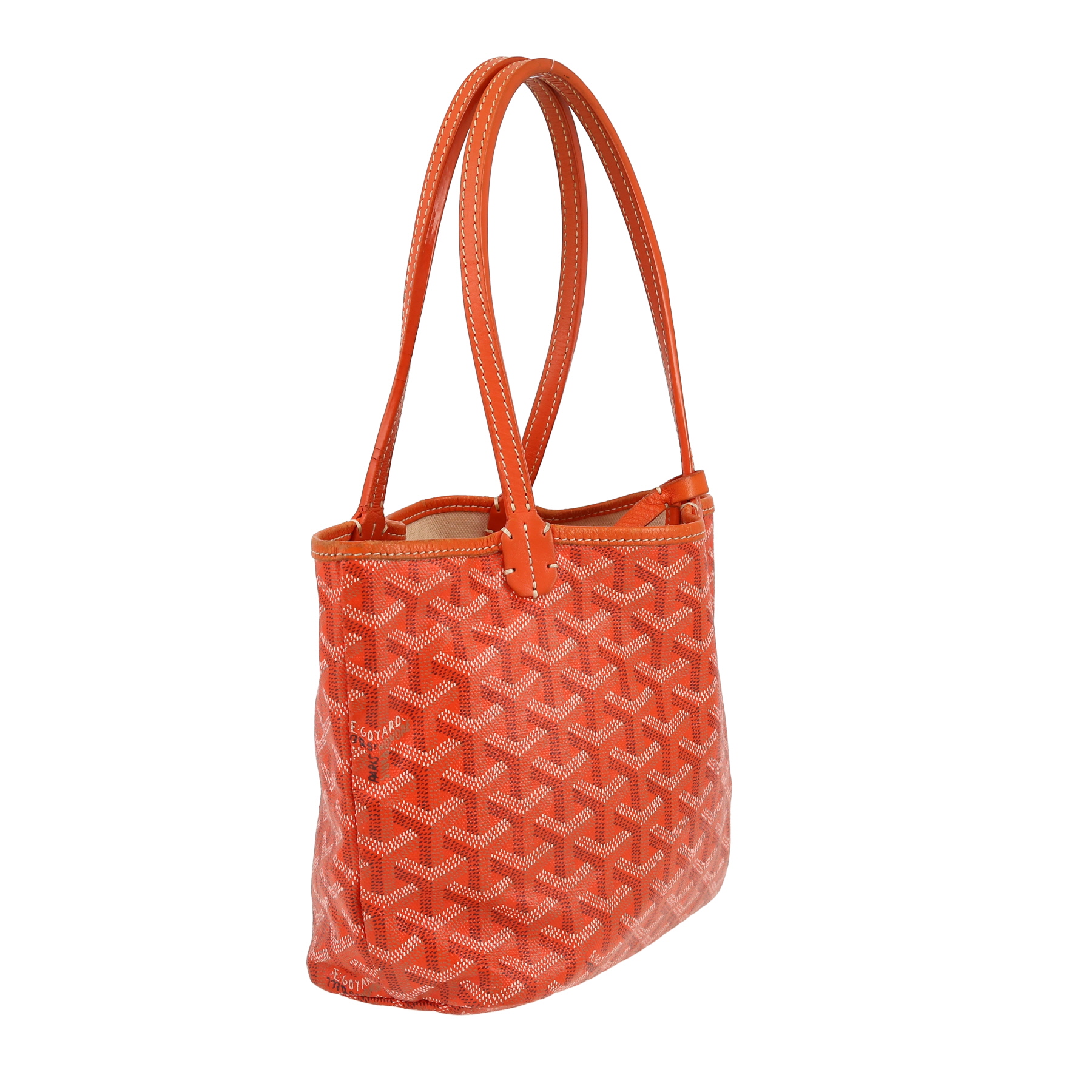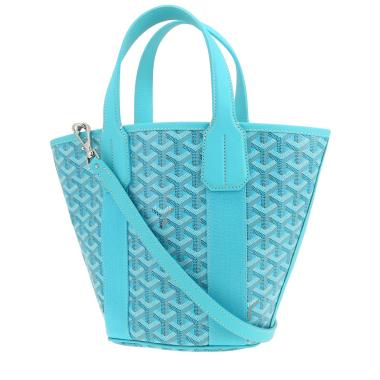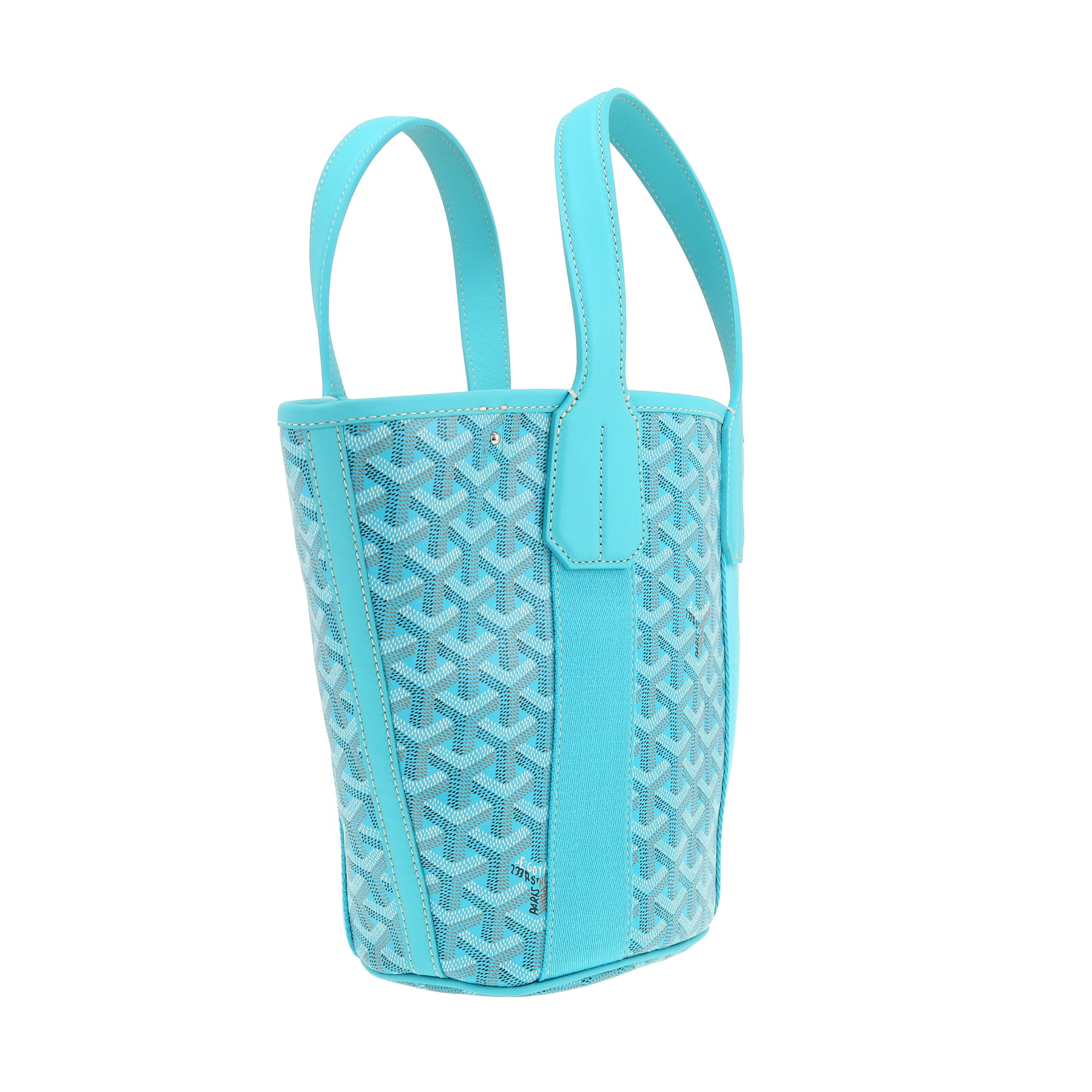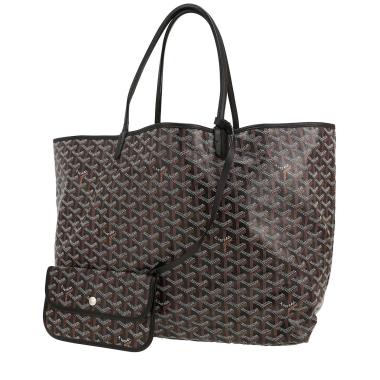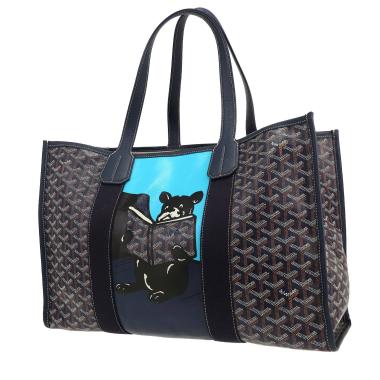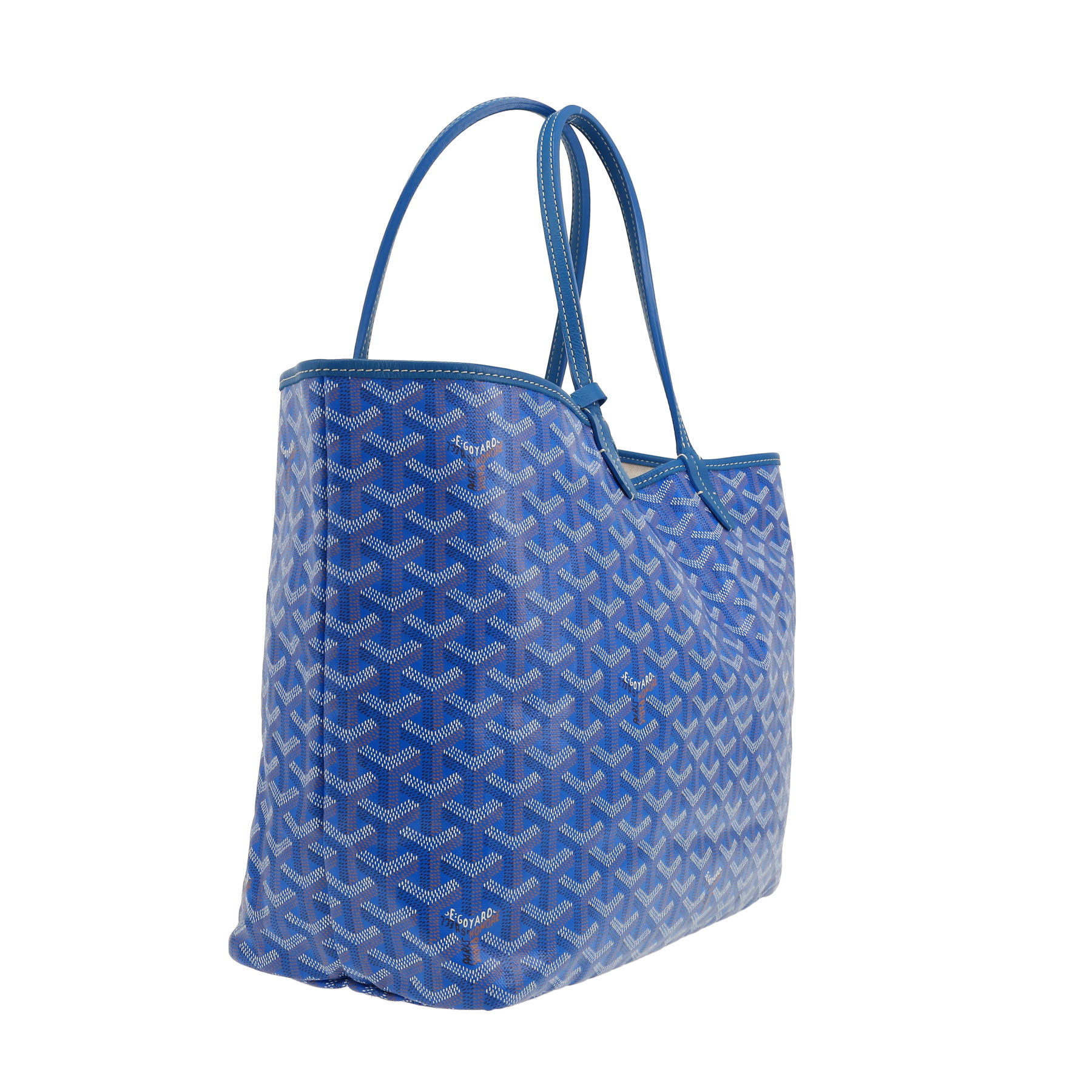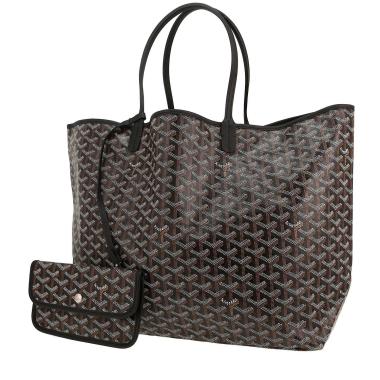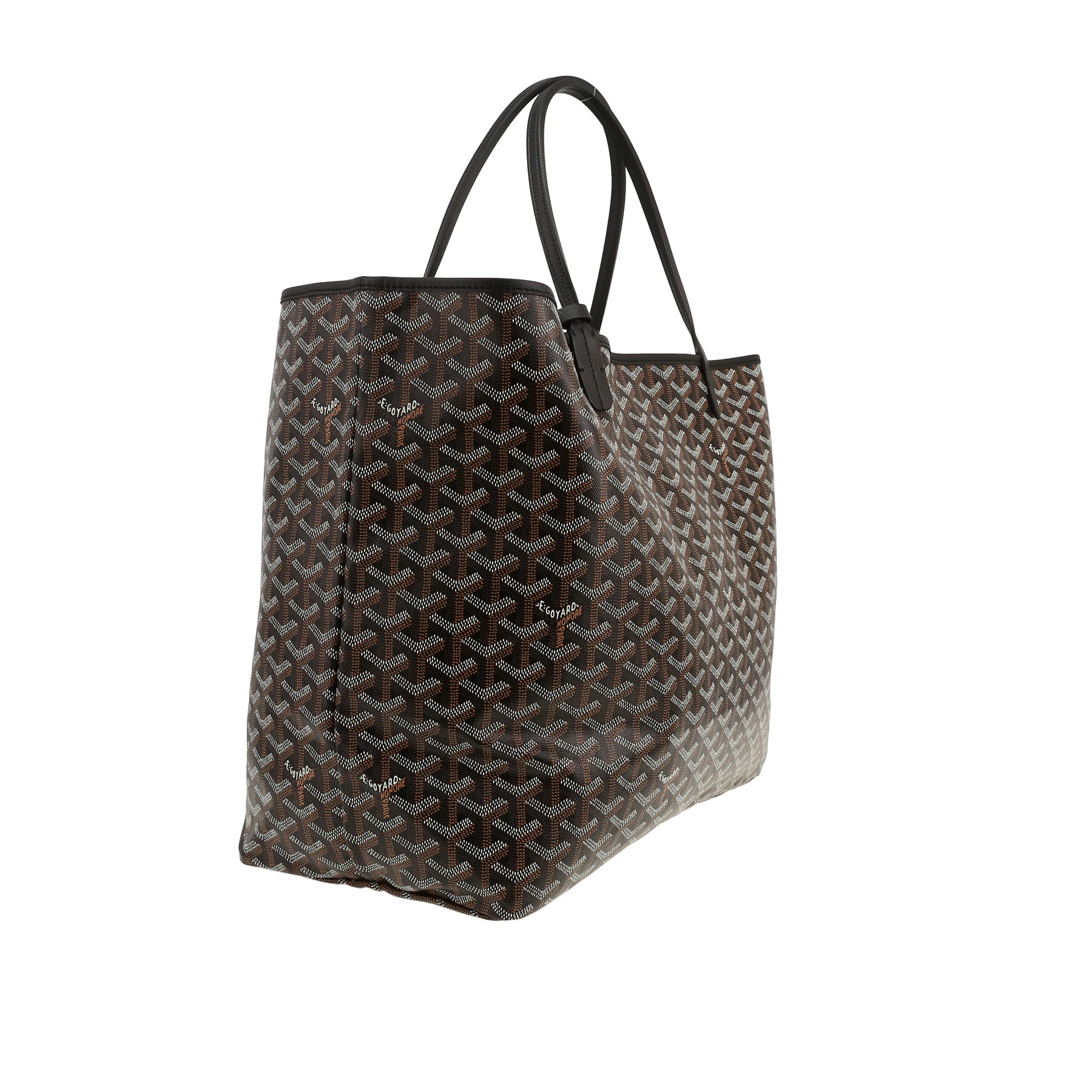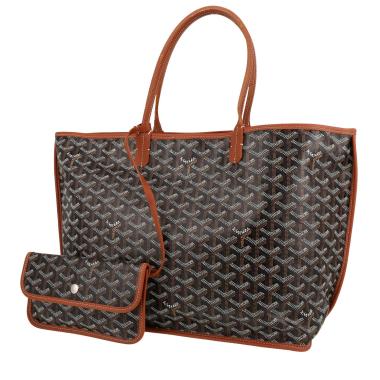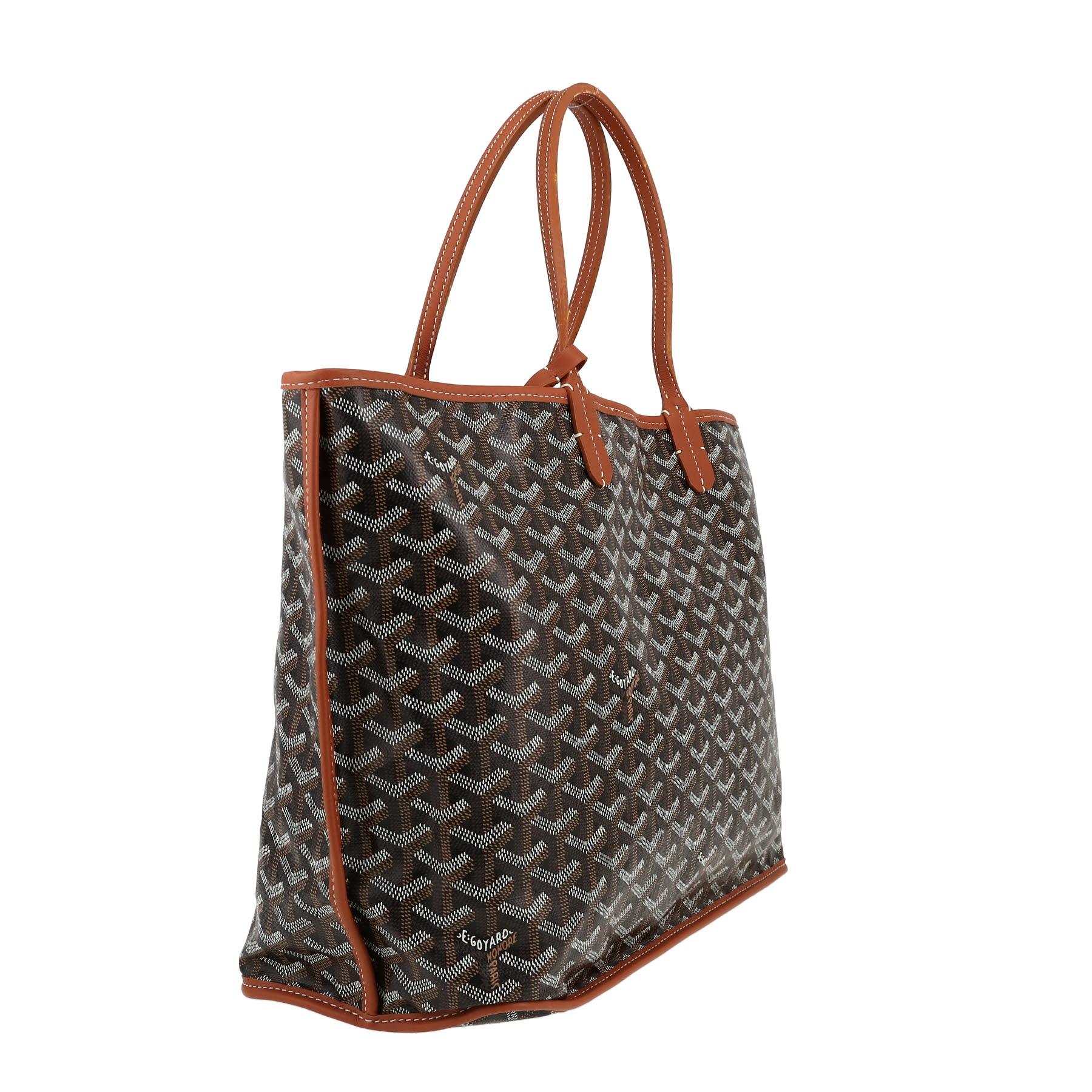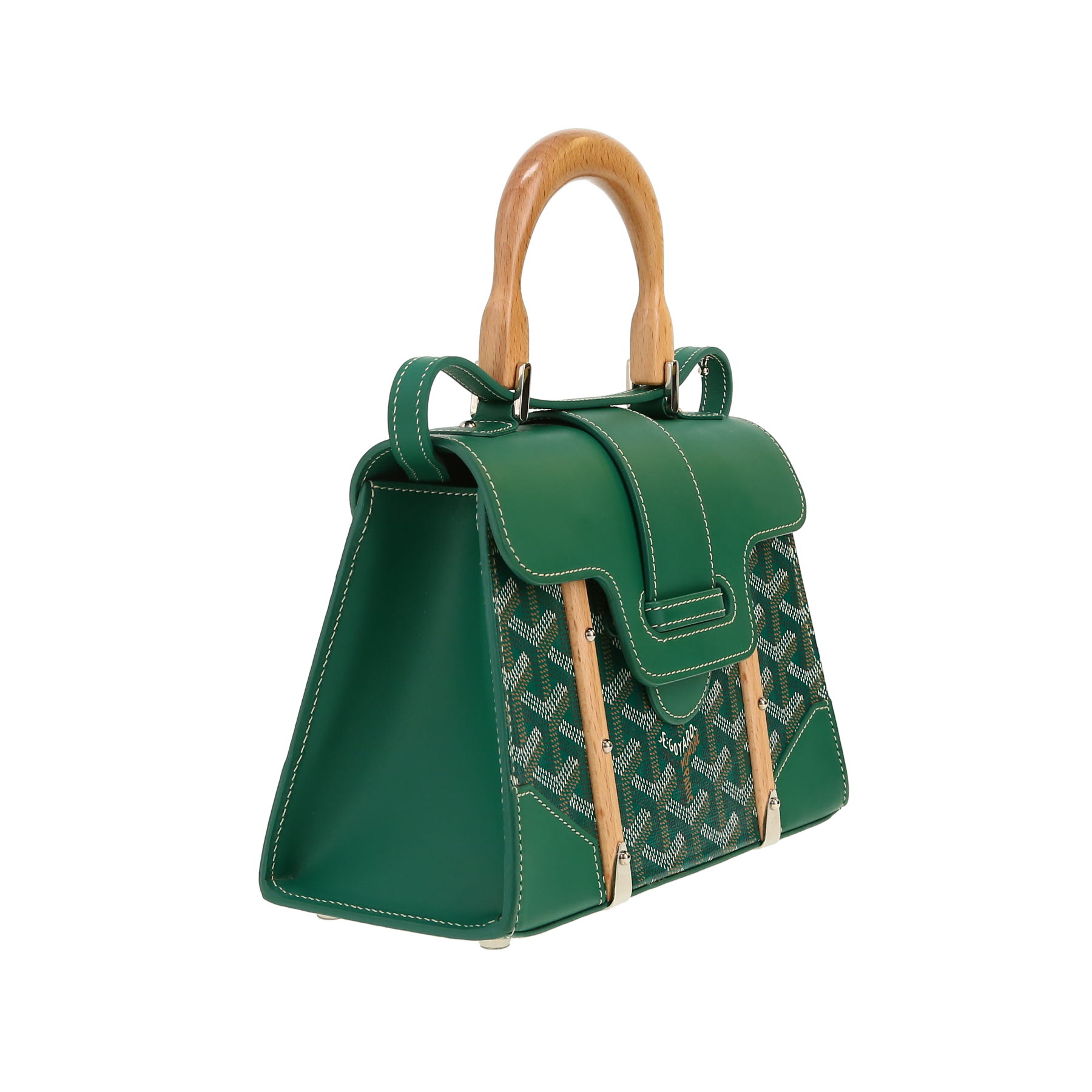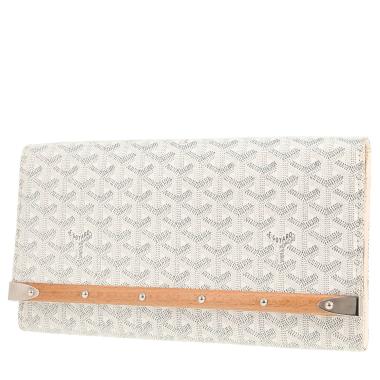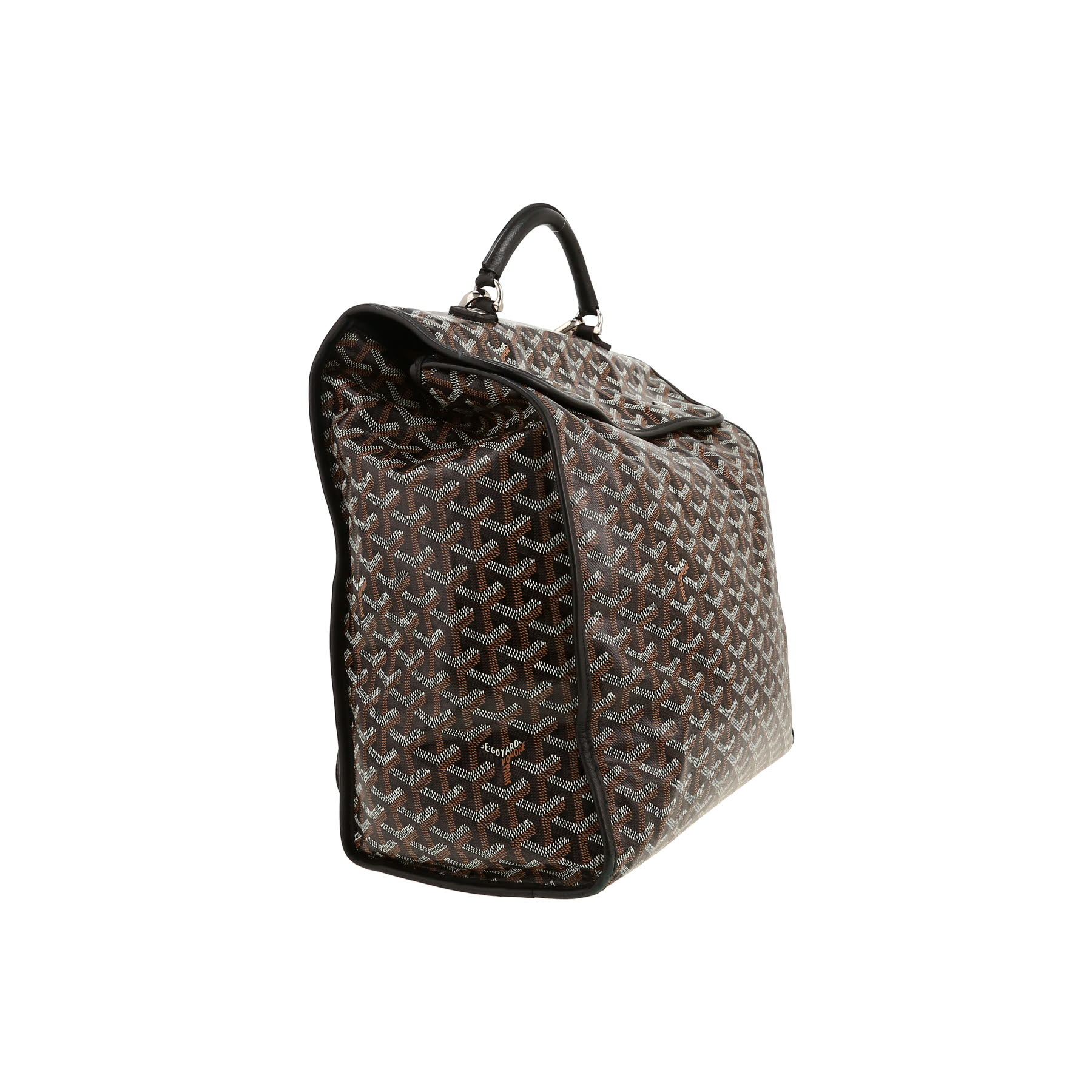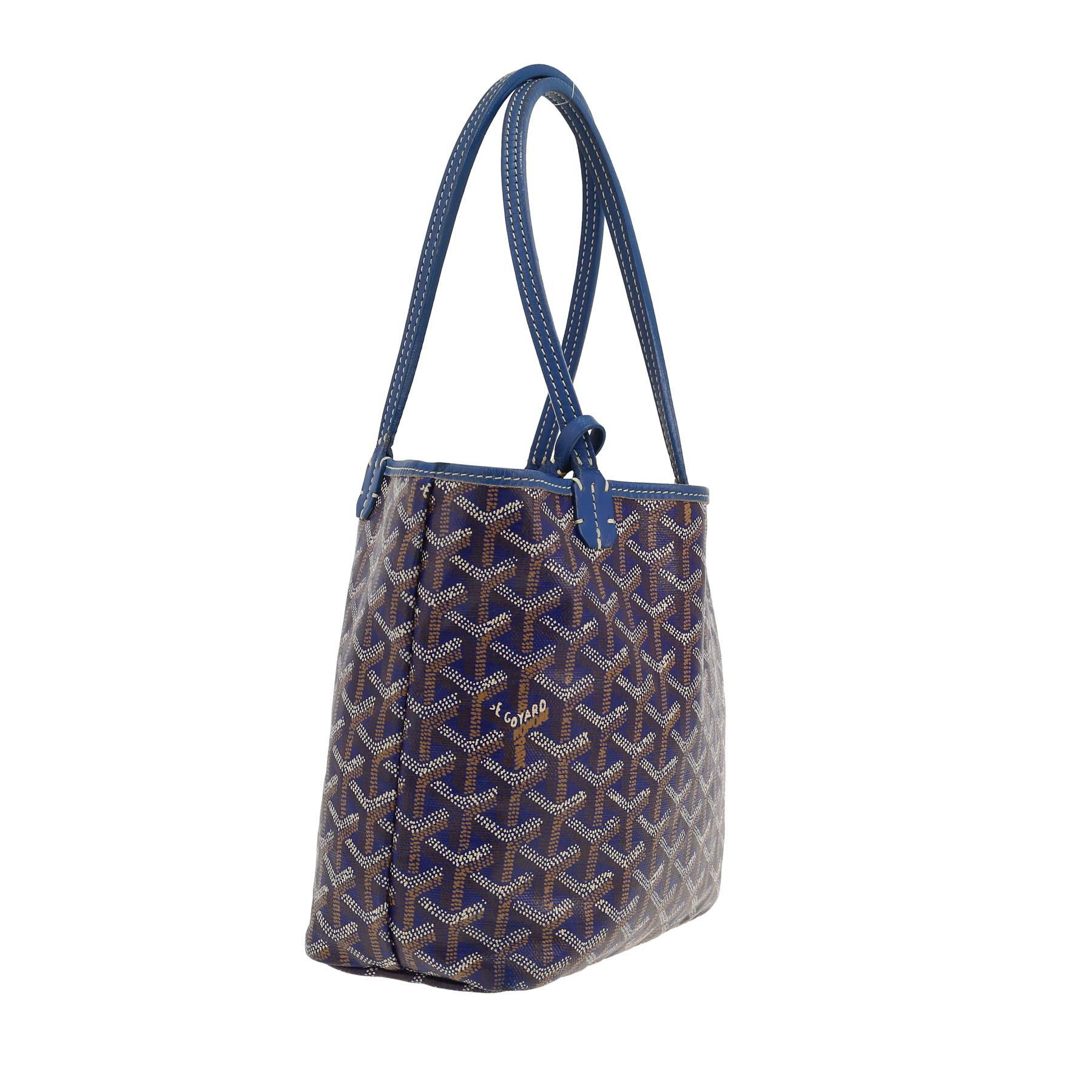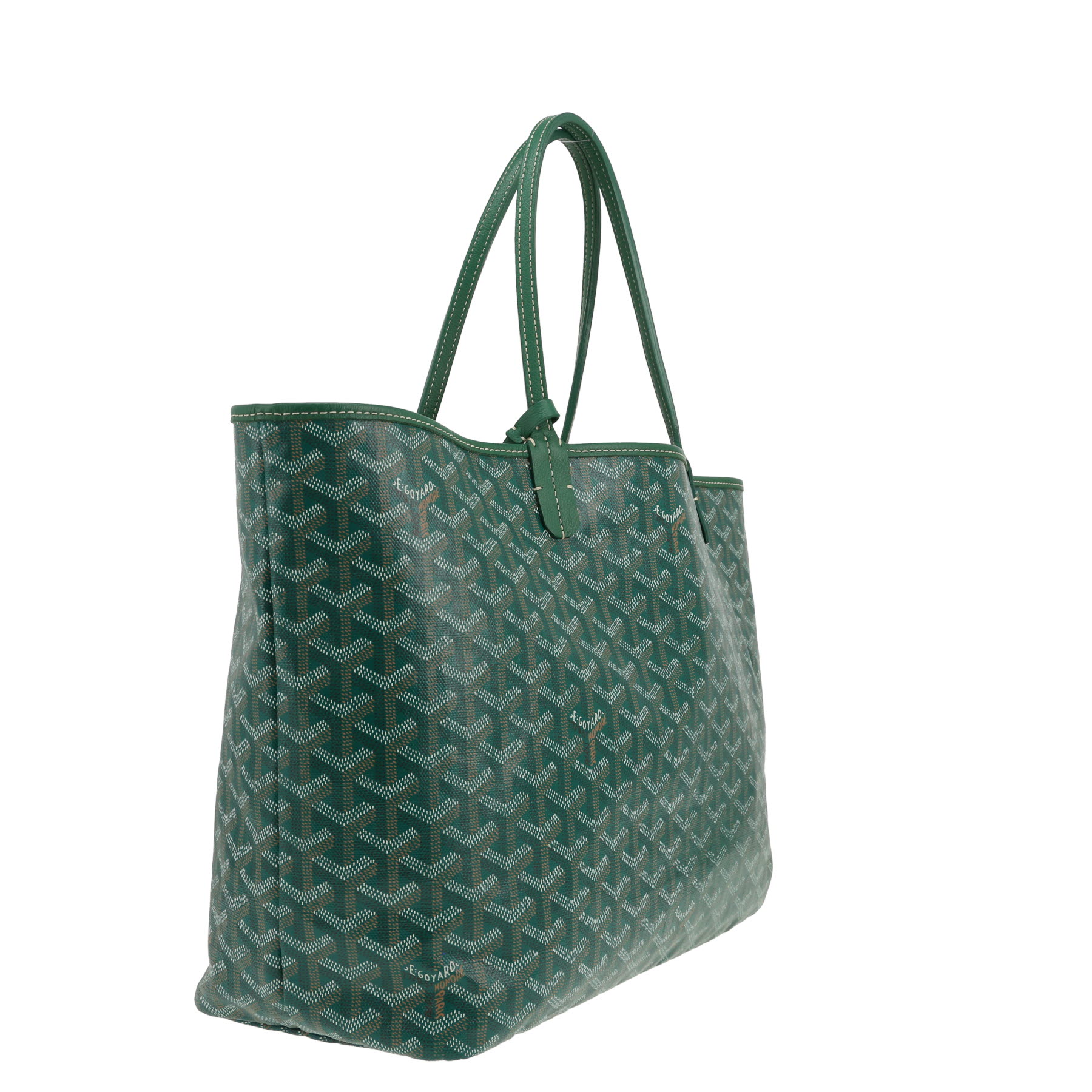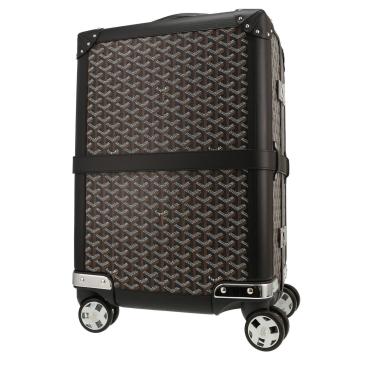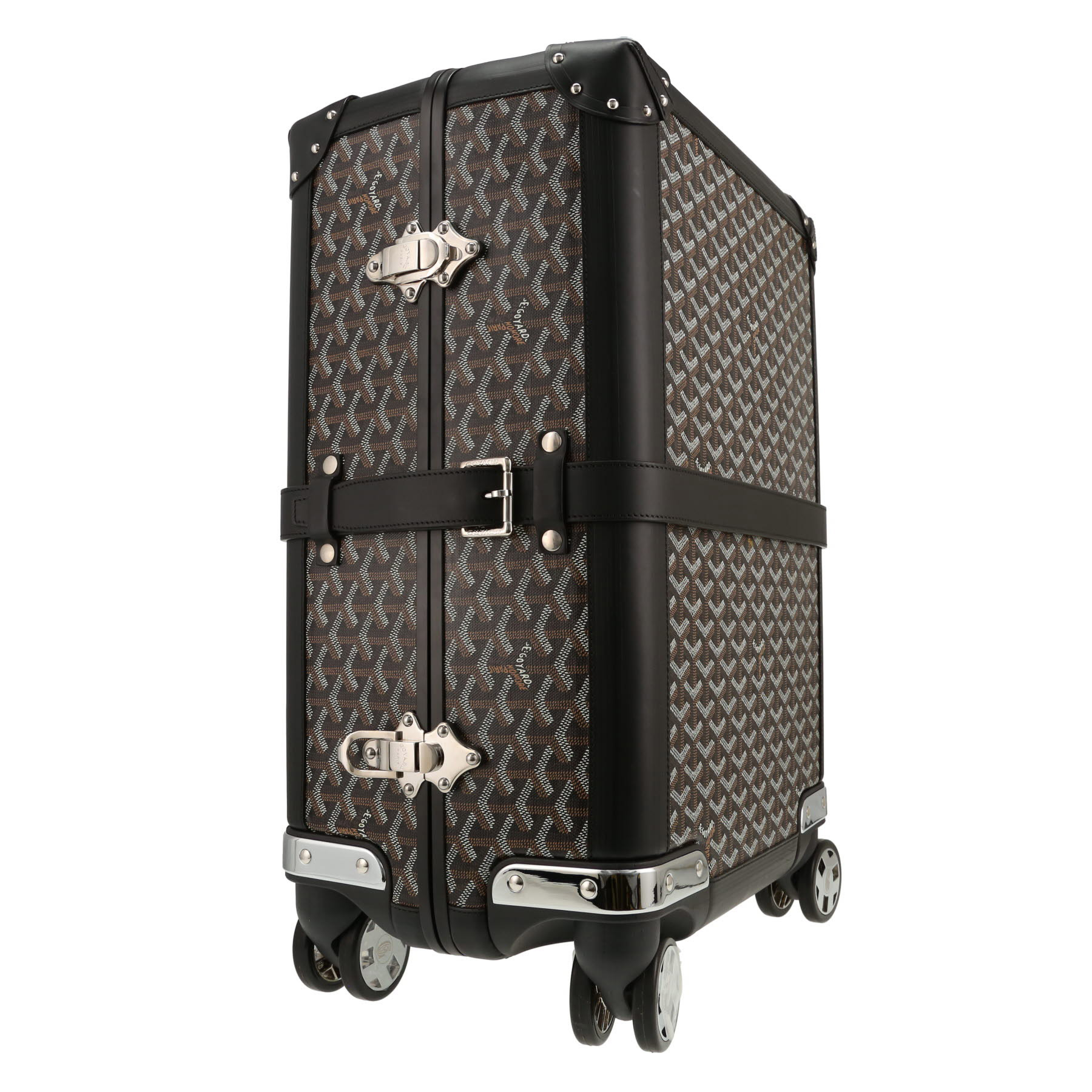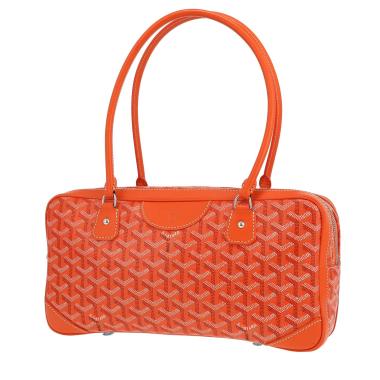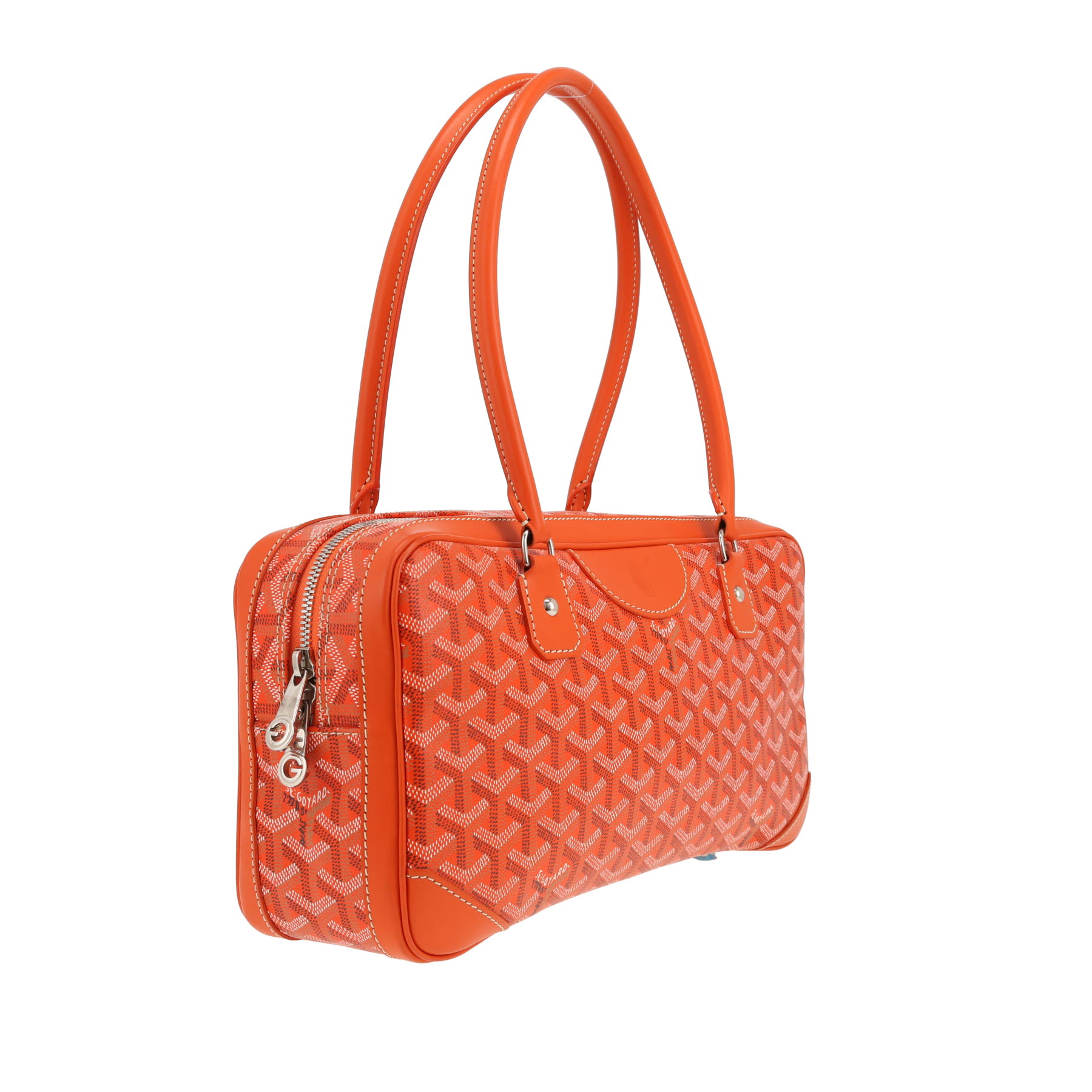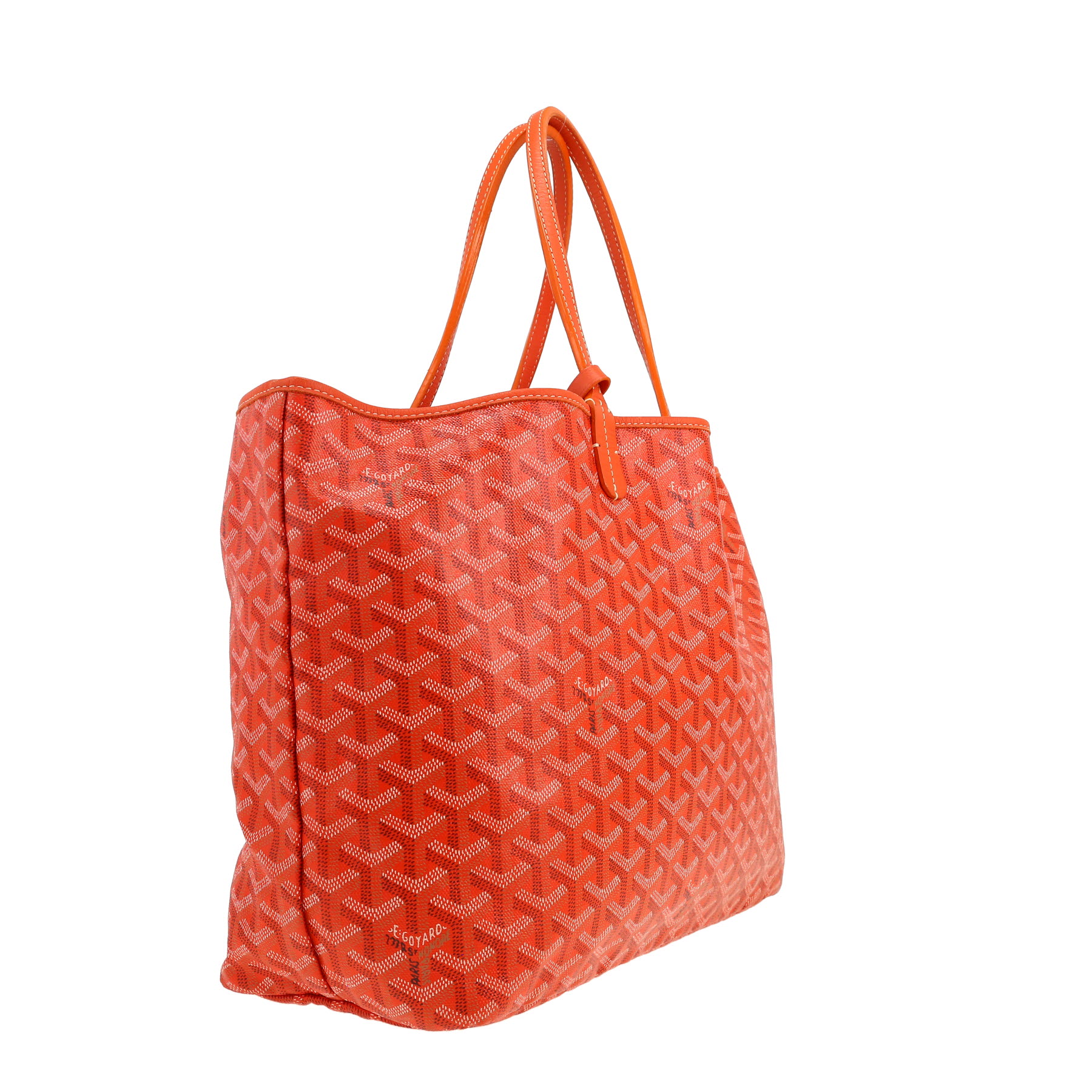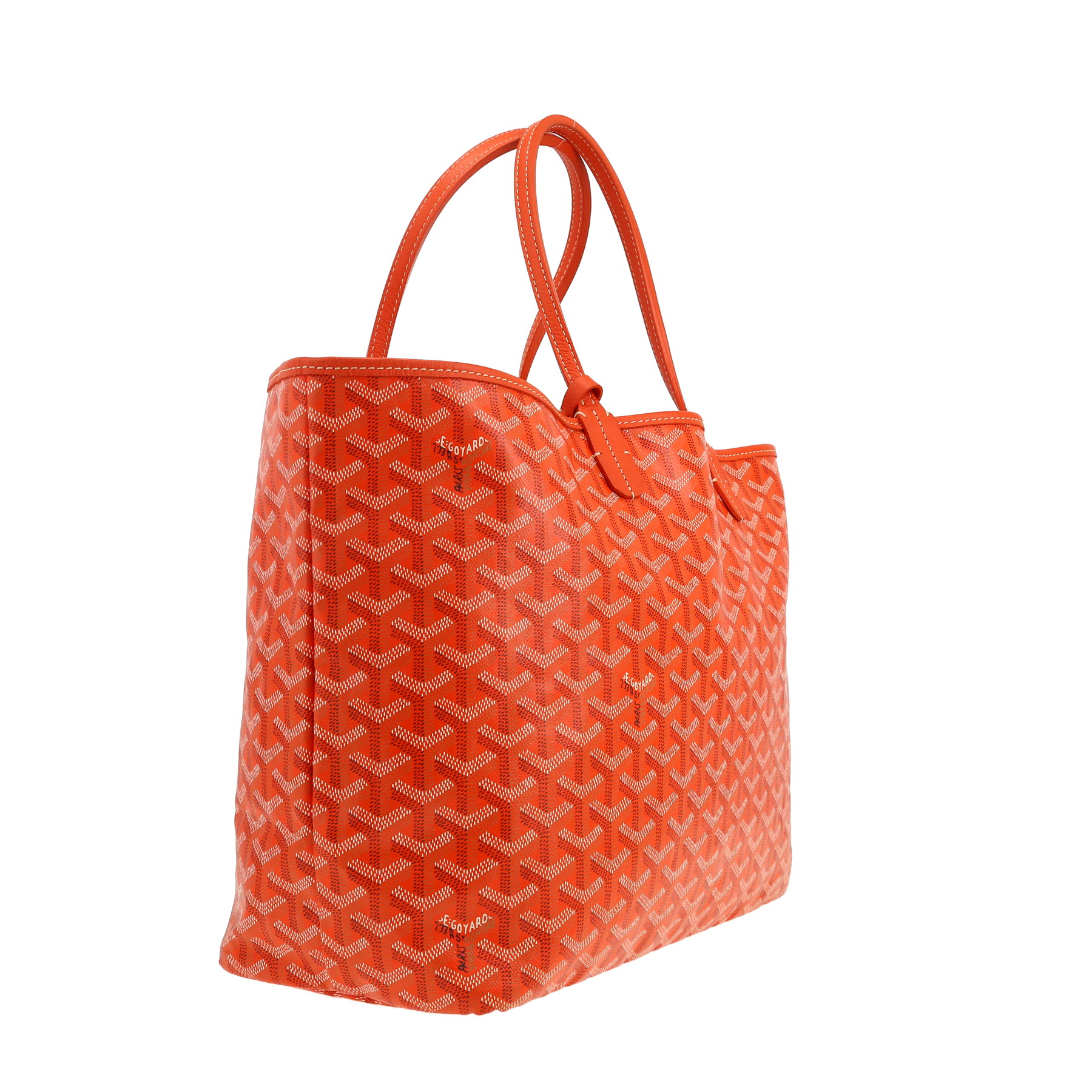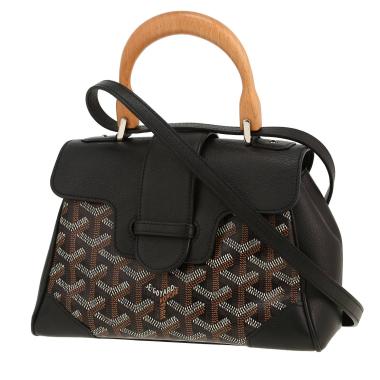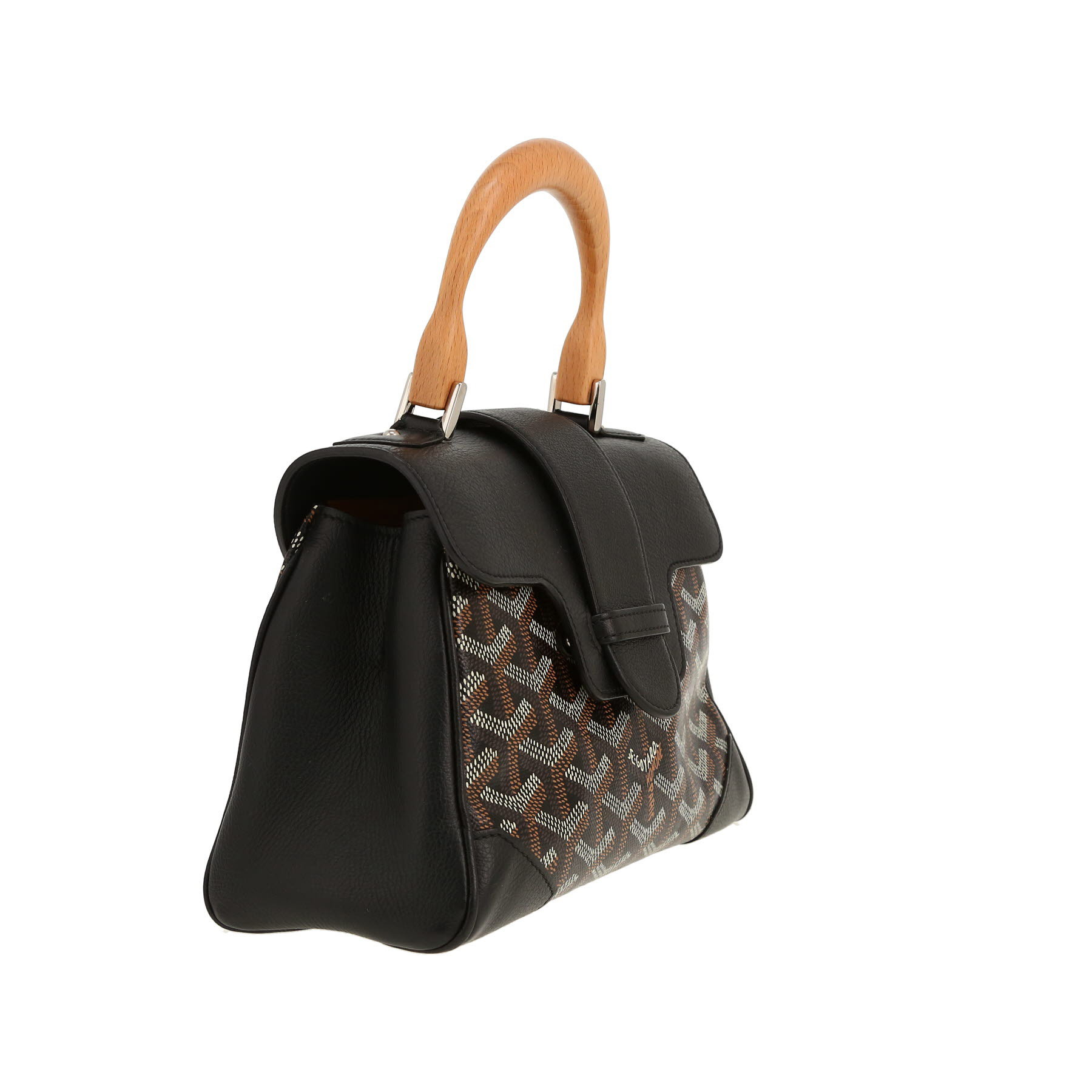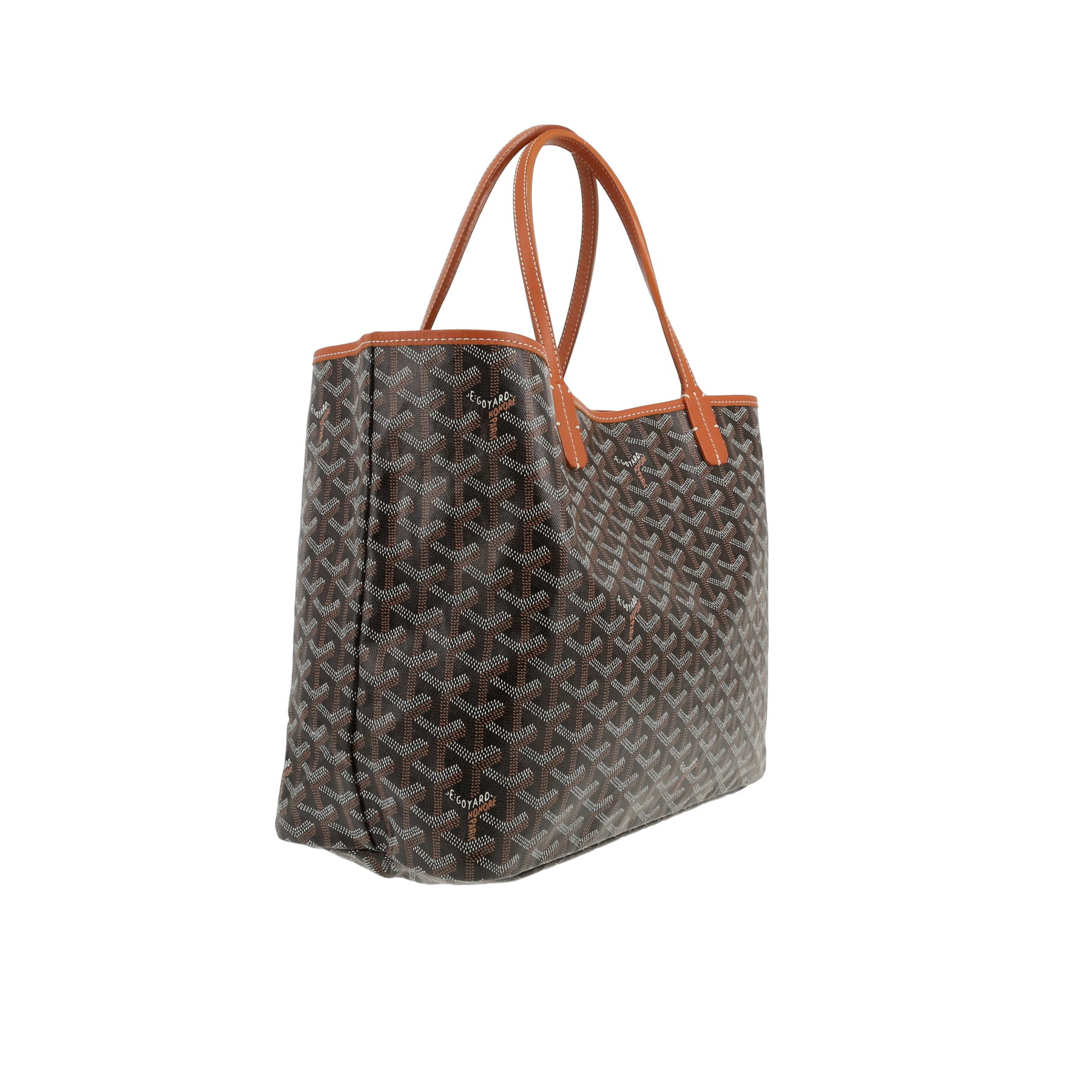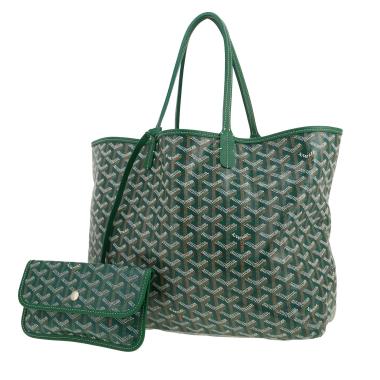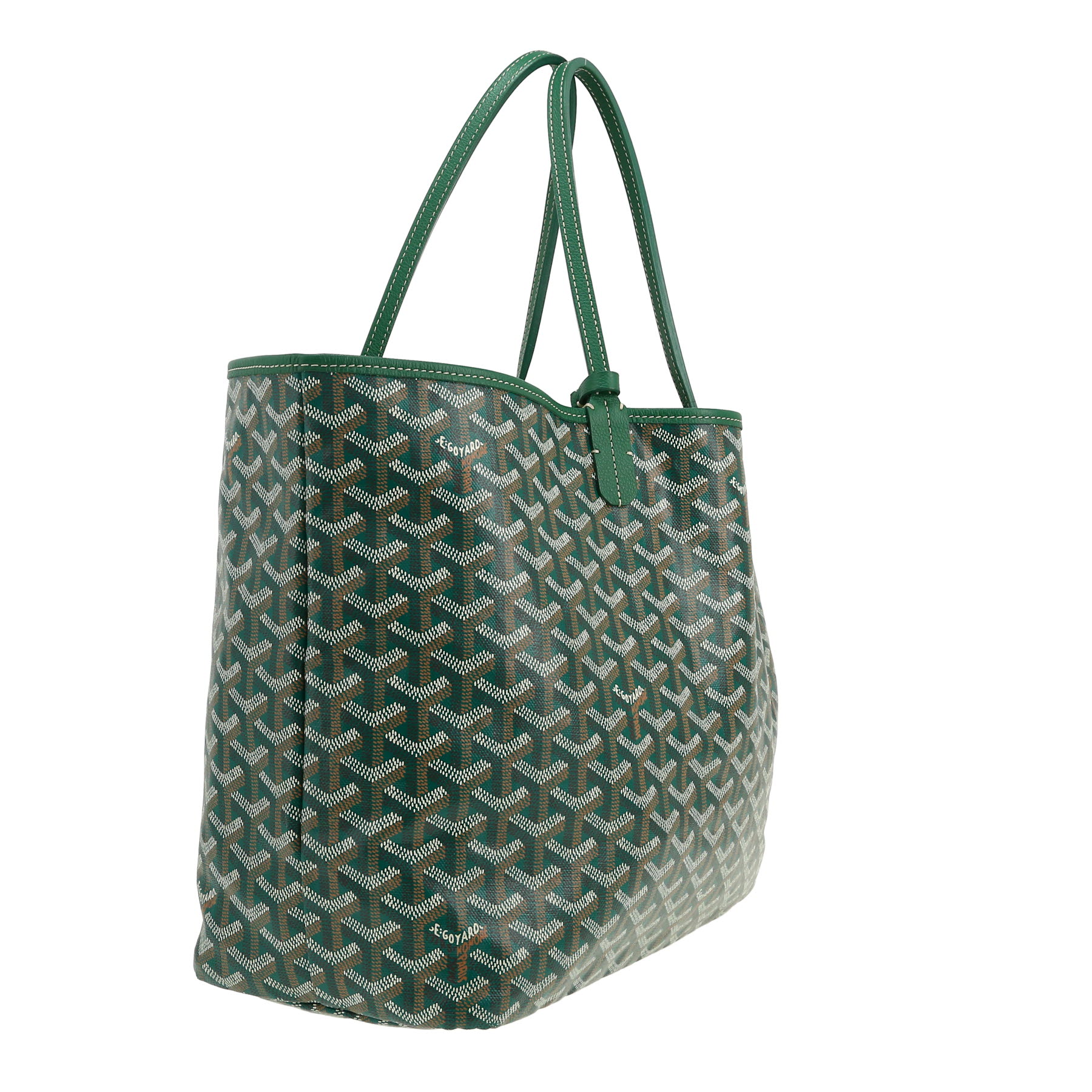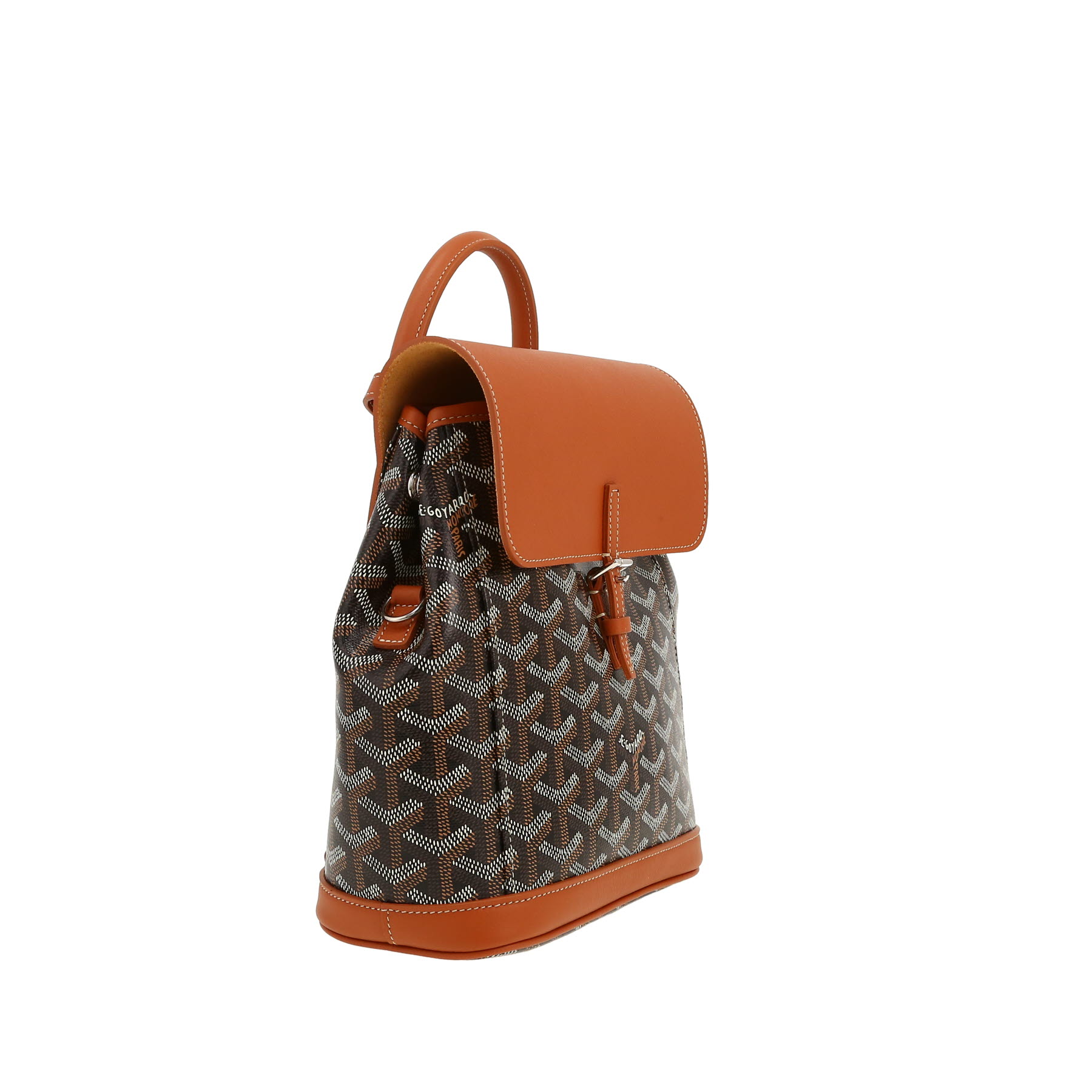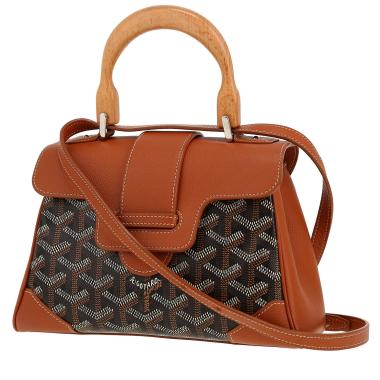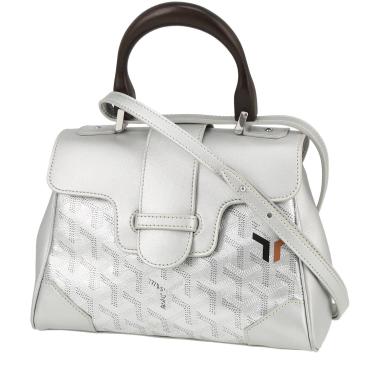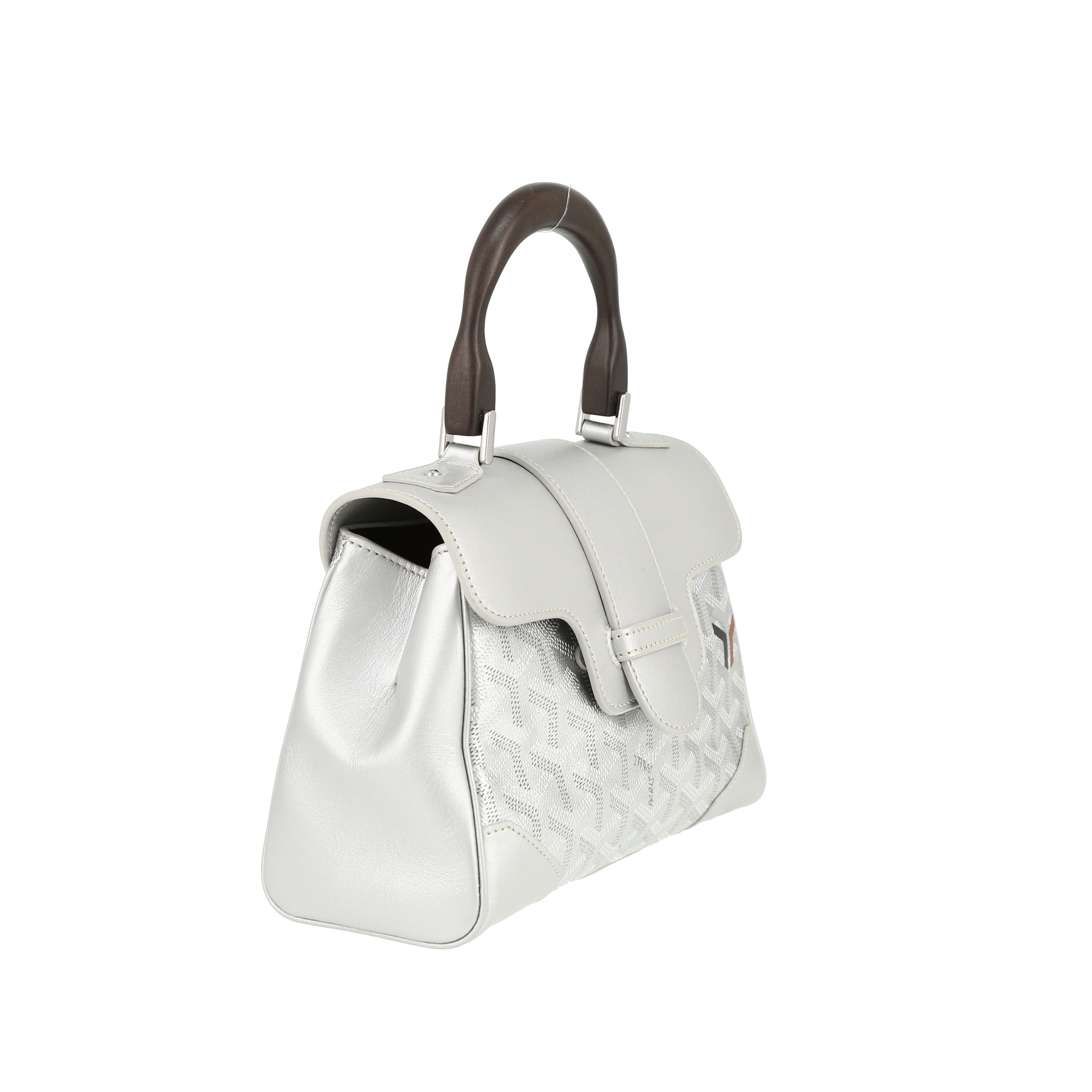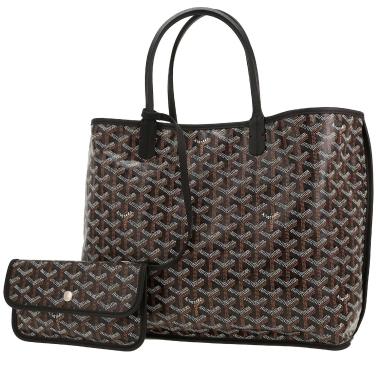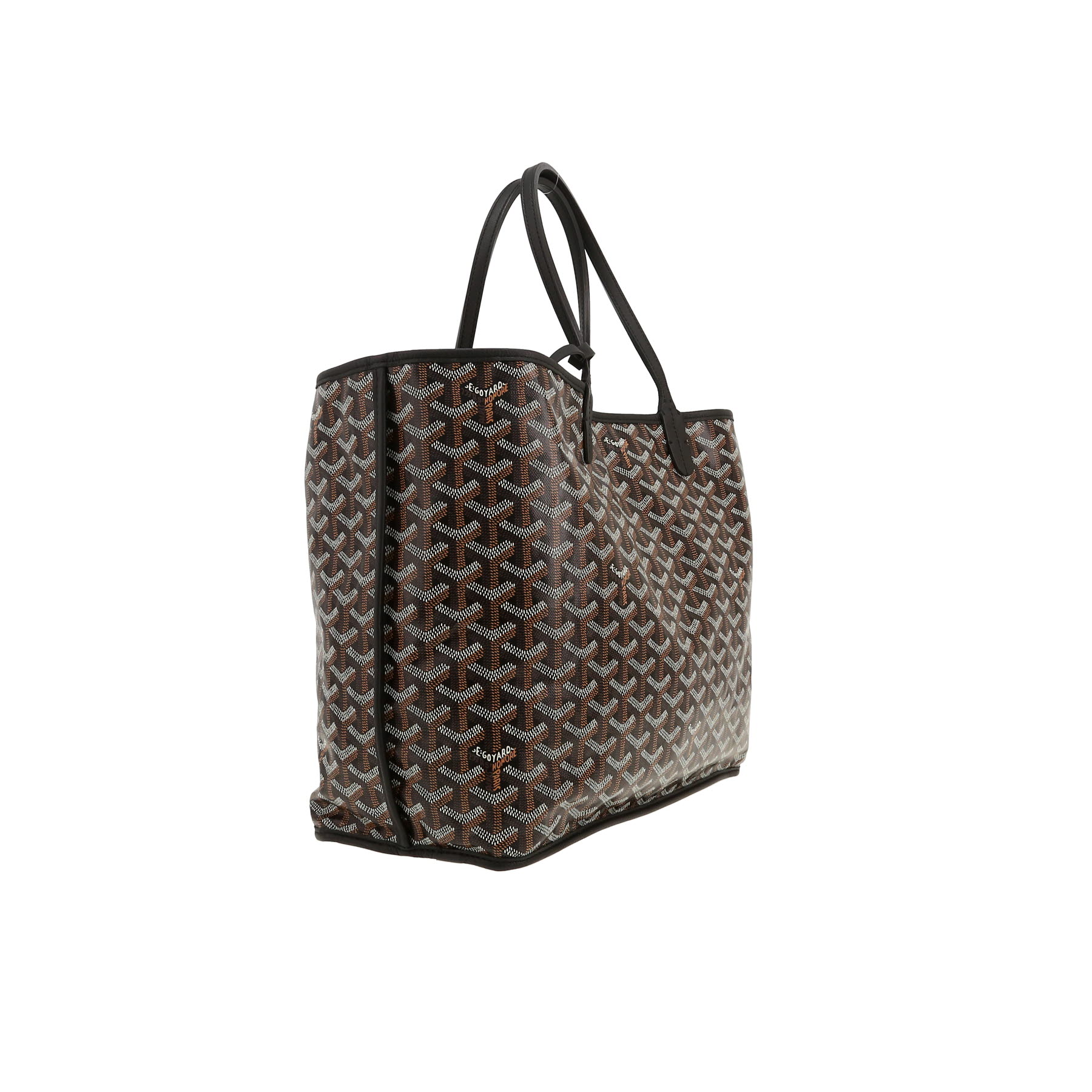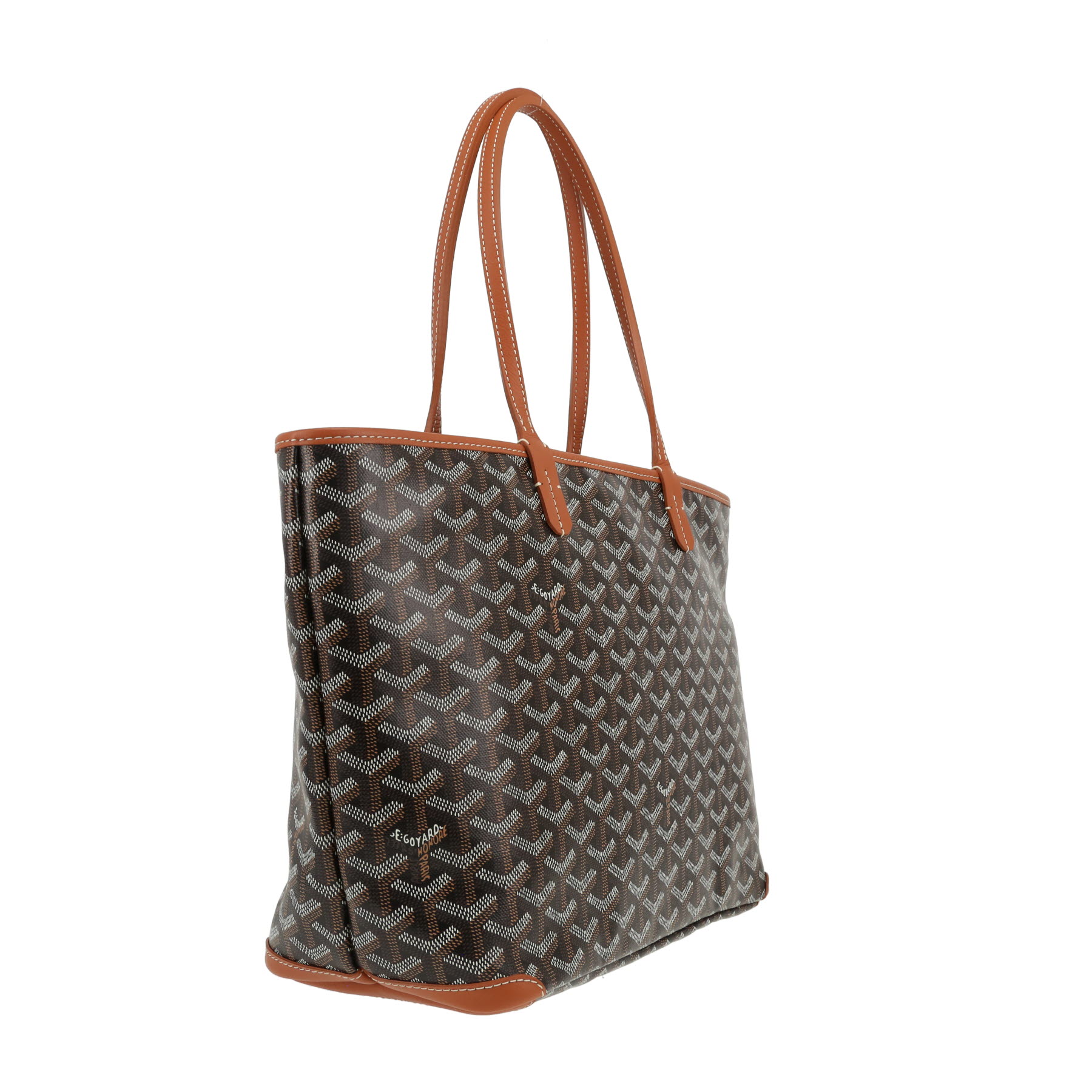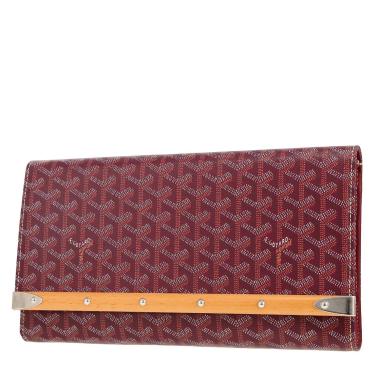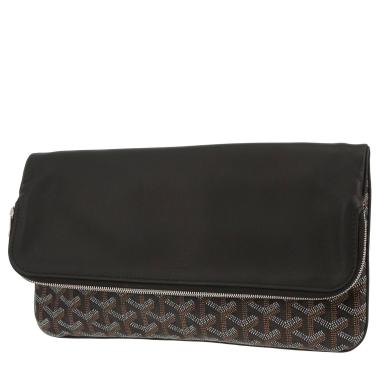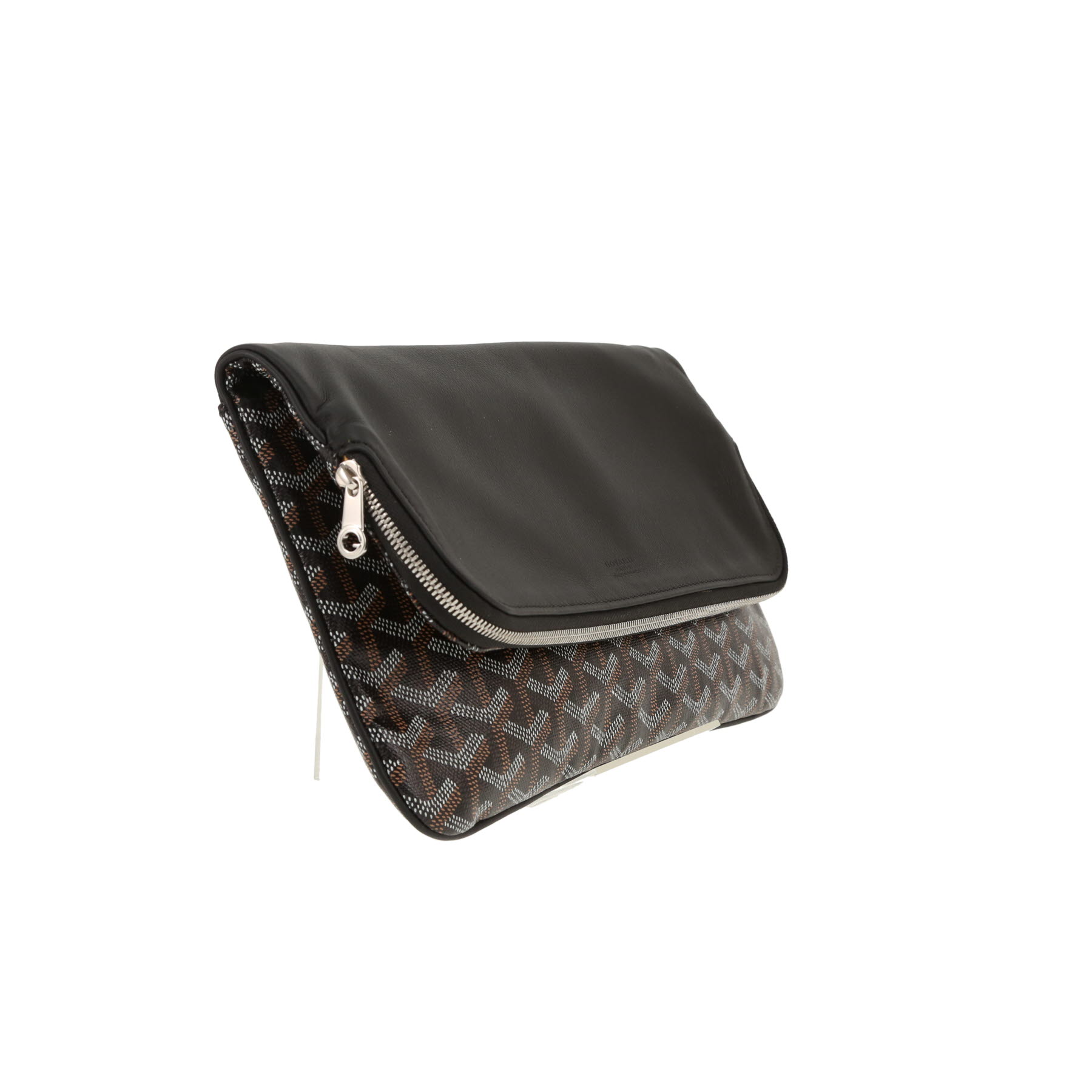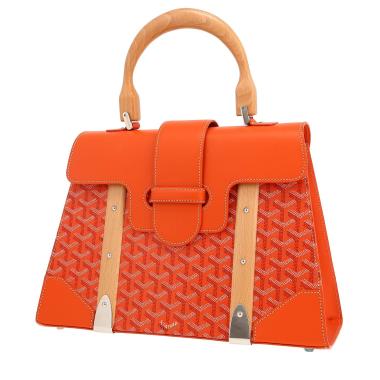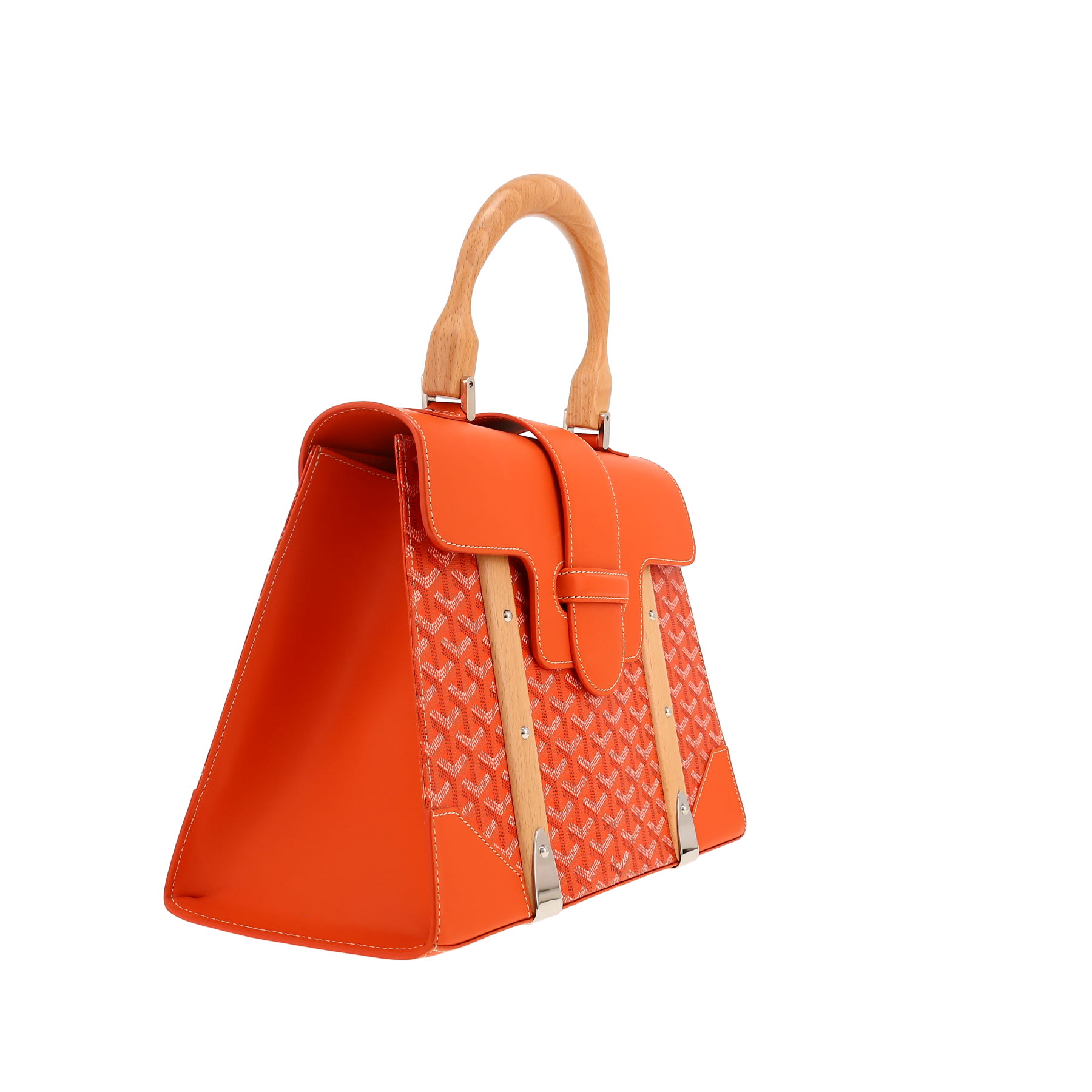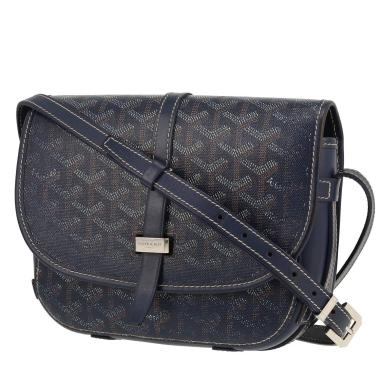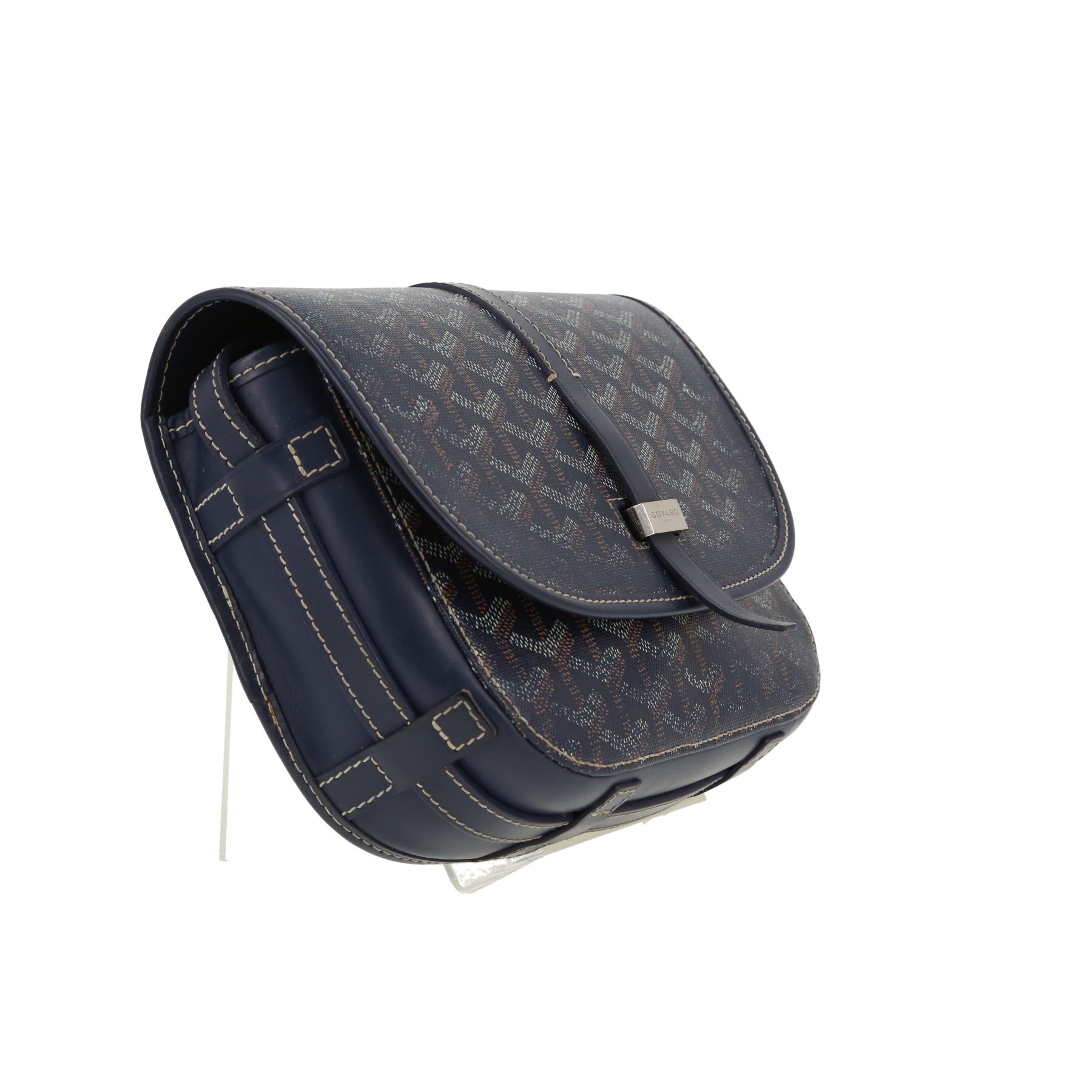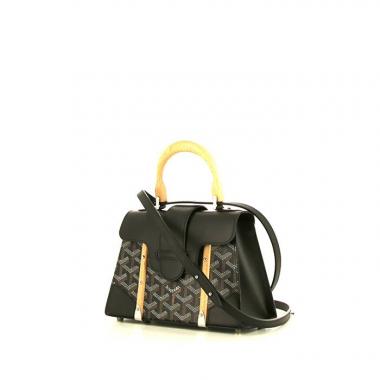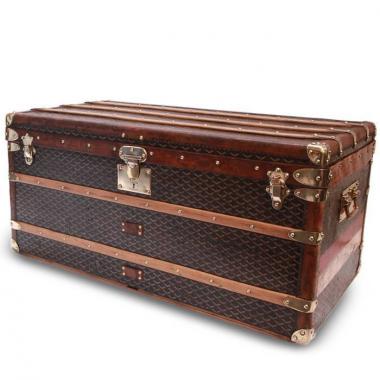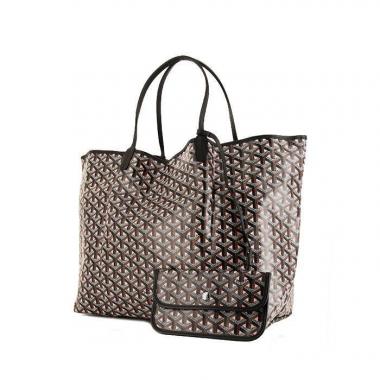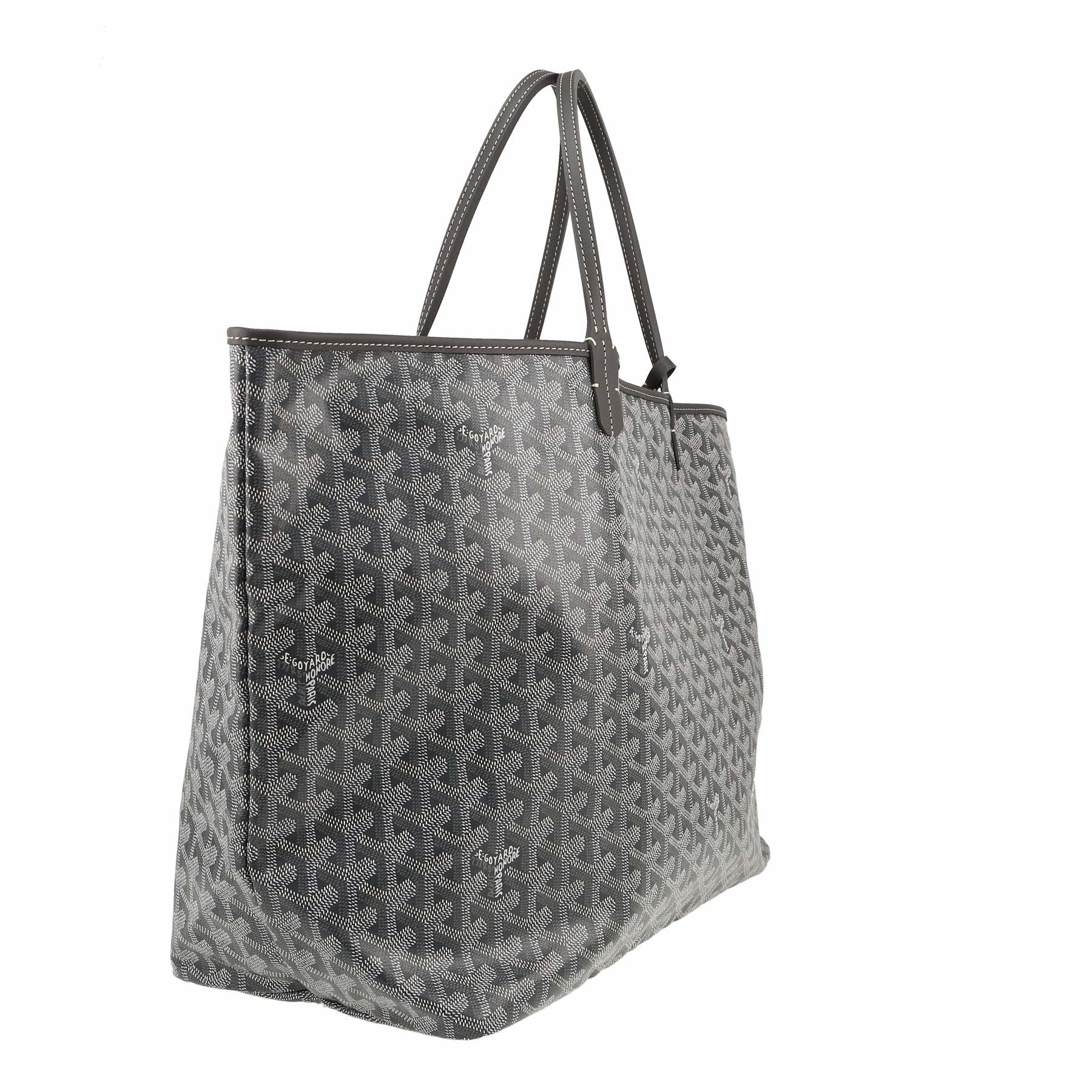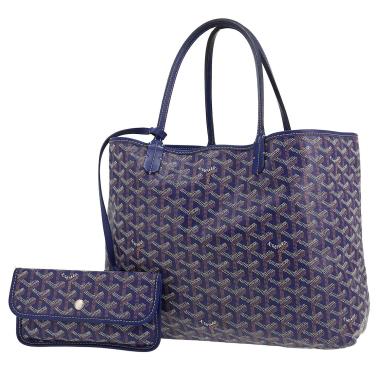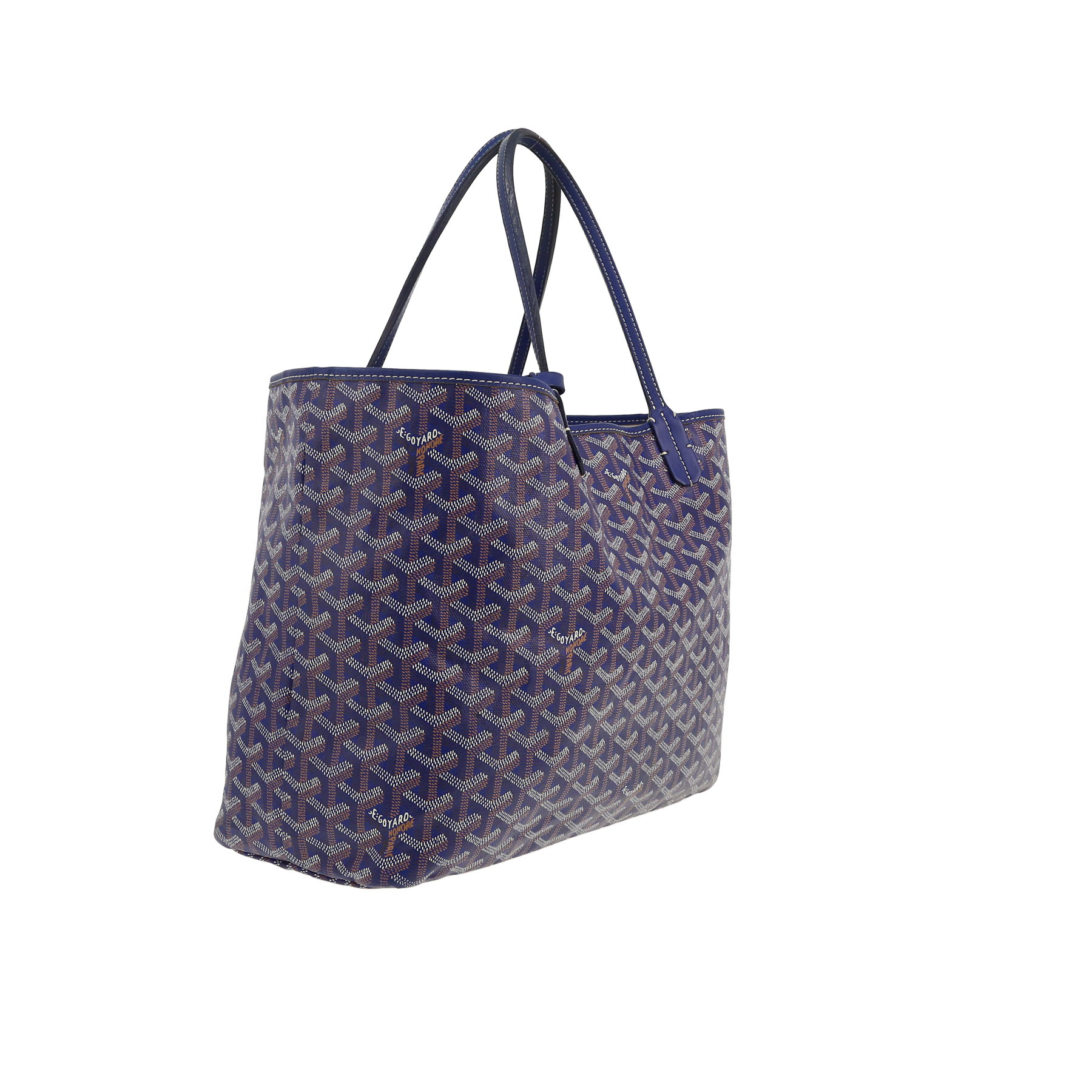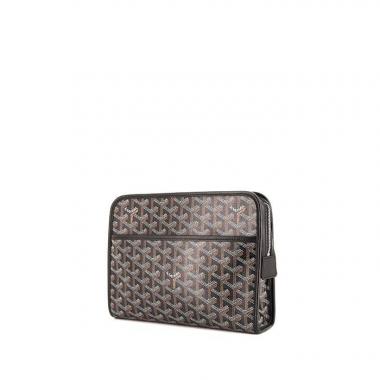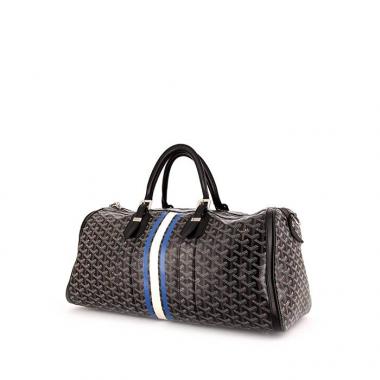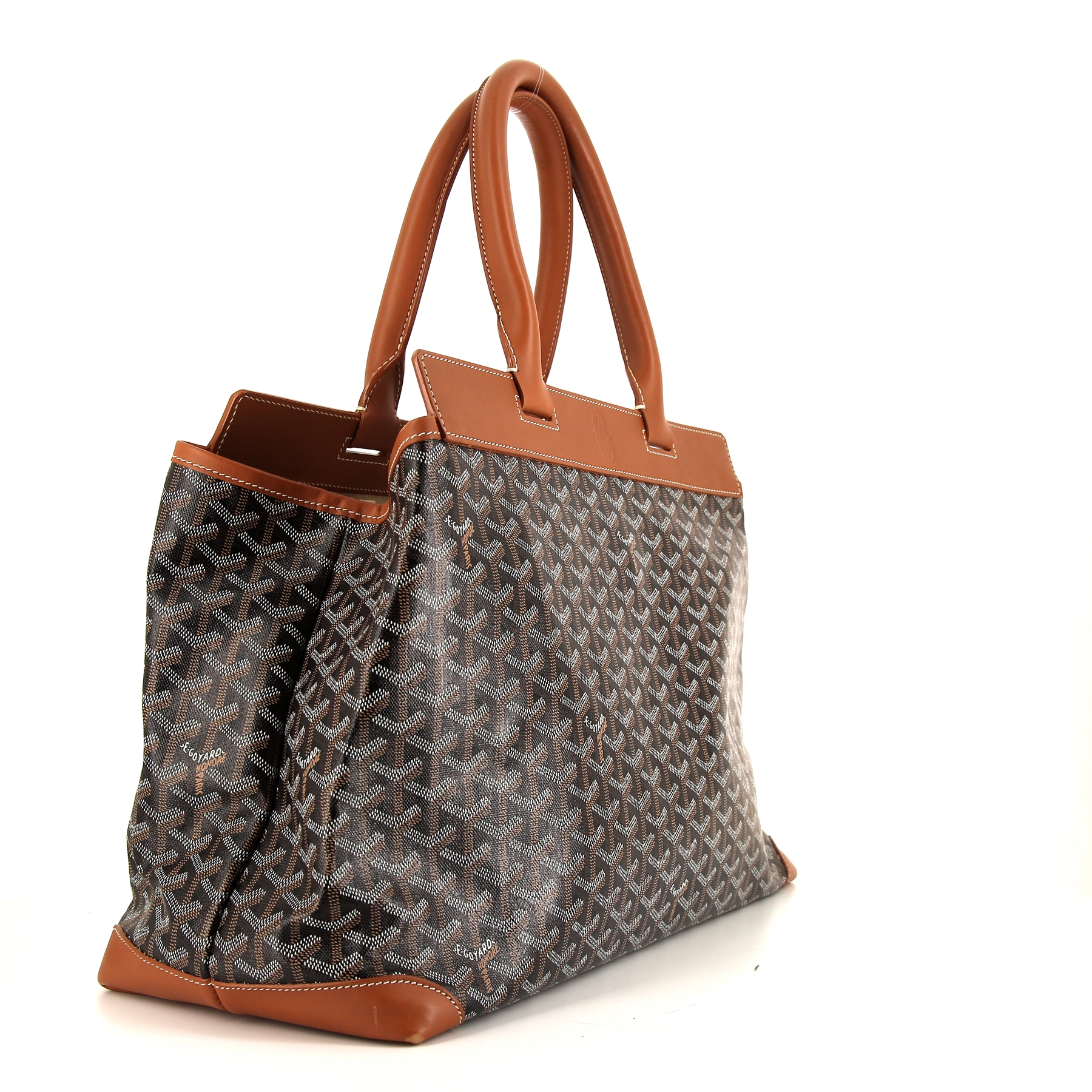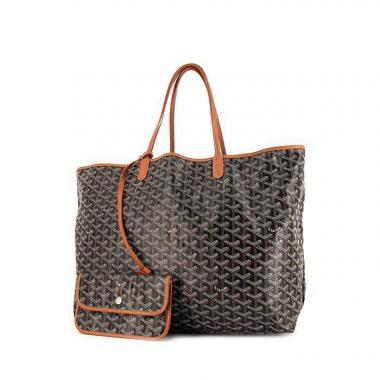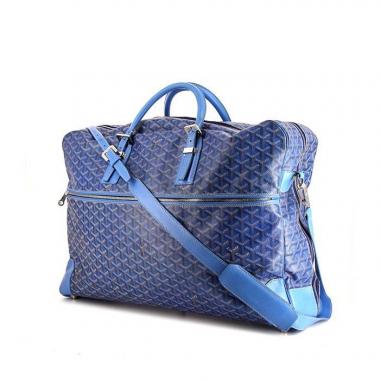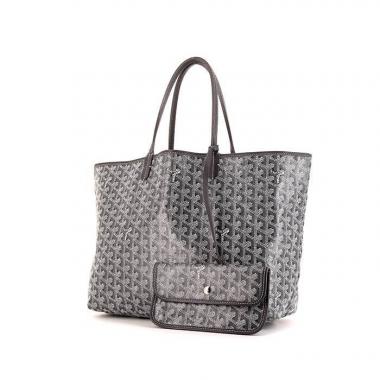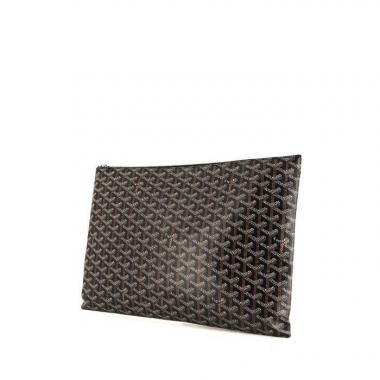Goyard bags
-
Goyard Saigon handbag in green crocodile
7,980 €
-
Goyard Saint-Louis shopping bag in yellow Goyard canvas and yellow leather
2,280 €
-
Goyard Petit Flot handbag Goyard canvas and burgundy leather
1,850 €
-
Goyard Saint Leger handbag in burgundy Goyard canvas and burgundy leather
2,150 €
-
Goyard Marquise shopping bag in black Goyard canvas and brown leather
2,250 €
-
Goyard Saint-Louis shopping bag in black and brown Goyard canvas and brown leather
1,950 €
-
Goyard Saint-Louis shopping bag in red Goyard canvas and red leather
2,250 €
-
Goyard Saint-Louis shopping bag in red Goyard canvas and red leather
2,250 €
-
Goyard Hirondelle shoulder bag in grey Goyard canvas and grey leather
1,550 €
-
Goyard Alpin Mini backpack in grey Goyard canvas and grey leather
4,550 €
-
Goyard Saint-Louis shopping bag in blue Goyard canvas and blue leather
1,950 €
-
Goyard Belharra shopping bag in navy blue Goyard canvas and brown leather
2,250 €
-
Goyard Saint-Louis shopping bag in brown and black Goyard canvas and brown leather
2,250 €
-
Goyard Anjou small model shopping bag in brown Goyard canvas and brown leather
2,250 €
-
Goyard Saint-Louis shopping bag in black Goyard canvas and brown leather
1,650 €
-
Goyard Hirondelle shoulder bag in black Goyard canvas and brown leather
1,550 €
-
Goyard Majordome suitcase in red Goyard canvas and red leather
2,480 €
Retail price recorded on the basis of similar items in 2025 Retail Price: 3,500 €
-
Goyard wallet in burgundy Goyard canvas
890 €
-
Goyard Saint-Louis shopping bag in black Goyard canvas and brown leather
2,380 €
-
Goyard Hirondelle handbag in navy blue Goyard canvas and navy blue leather
1,550 €
-
Goyard Saint Leger backpack in yellow Goyard canvas and yellow leather
3,450 €
-
Goyard Saint-Louis shopping bag in orange Goyard canvas and orange leather
1,980 €
-
Goyard Béluga handbag Goyard canvas and black leather
1,650 €
-
Goyard Jeanne handbag in black Goyard canvas and black leather
1,850 €
-
Goyard Belharra handbag in turquoise Goyard canvas and turquoise leather
2,680 €
-
Goyard Saint-Louis large model shopping bag in black Goyard canvas and black leather
2,280 €
-
Goyard Villette shopping bag in navy blue Goyard canvas and navy blue leather
2,550 €
-
Goyard Saint-Louis shopping bag in blue Goyard canvas and blue leather
2,280 €
-
Goyard Saint-Louis shopping bag in black Goyard canvas and black leather
2,280 €
-
Goyard Saint-Louis shopping bag in black Goyard canvas and black leather
2,250 €
-
Goyard Anjou shopping bag in black Goyard canvas and brown leather
2,950 €
-
Goyard Saigon shoulder bag in green Goyard canvas and green leather
4,550 €
-
Goyard Monte Carlo pouch in white Goyard canvas and white leather
2,450 €
-
Goyard Saint Leger backpack in black Goyard canvas and black leather
2,850 €
-
Goyard Mini Saint-Louis shopping bag in blue Goyard canvas and blue leather
1,980 €
-
Goyard Saint-Louis shopping bag in green Goyard canvas and green leather
1,980 €
-
Goyard Bourget suitcase in black and grey Goyard canvas and black leather
5,450 €
-
Goyard Saint Martin bag worn on the shoulder or carried in the hand in orange Goyard canvas and orange leather
1,350 €
-
Goyard Saint-Louis shopping bag in orange Goyard canvas and orange leather
2,250 €
-
Goyard Sainte Marie pouch in red Goyard canvas
980 €
-
Goyard Saint-Louis shopping bag in orange Goyard canvas and orange leather
2,280 €
-
Goyard Saigon mini shoulder bag in black Goyard canvas and black leather
3,980 €
-
Goyard Saint-Louis shopping bag in black Goyard canvas and brown leather
1,980 €
-
Goyard Saint-Louis shopping bag in black Goyard canvas and black leather
2,280 €
-
Goyard Saint-Louis shopping bag in green Goyard canvas and green leather
2,250 €
-
Goyard Alpin Mini backpack Goyard canvas and brown leather
3,980 €
-
Goyard Saigon small model shoulder bag in black Goyard canvas and brown grained leather
3,850 €
-
Goyard Saint-Louis shopping bag in black Goyard canvas and brown leather
1,650 €
-
Goyard Saigon handbag in silver Goyard canvas and silver leather
3,280 €
-
Goyard Anjou handbag Goyard canvas and black leather
2,980 €
-
Goyard Artois shopping bag in black Goyard canvas and brown leather
2,450 €
-
Goyard Monte Carlo pouch in burgundy Goyard canvas
2,280 €
-
Goyard Sainte Marie pouch in black Goyard canvas and black leather
1,150 €
-
Goyard Saigon handbag in orange Goyard canvas and orange leather
4,550 €
-
Goyard Belvedère shoulder bag in navy blue Goyard canvas and navy blue leather
1,550 €
-
Goyard Saigon handbag in black monogram canvas and black leather
This item is no longer available
-
Goyard Monte Carlo pouch in black monogram canvas
This item is no longer available
-
Goyard mail trunk in Goyard canvas and natural leather
This item is no longer available
-
Goyard Saint-Louis Claire Voie large model shopping bag in black and pink Goyard canvas and black leather
This item is no longer available
-
Goyard Saint-Louis shopping bag in red Goyard canvas and red leather
This item is no longer available
-
Goyard Saint-Louis shopping bag in grey Goyard canvas and grey leather
This item is no longer available
-
Goyard Saint-Louis shopping bag in navy blue Goyard canvas and navy blue leather
This item is no longer available
-
Goyard Jouvence pouch in black Goyard canvas and black leather
This item is no longer available
-
Goyard mail trunk in black Goyard canvas and black metal
This item is no longer available
-
Goyard 24h Croisière travel bag in black monogram canvas and black leather
This item is no longer available
-
Goyard Bellechasse shopping bag in black Goyard canvas and brown leather
This item is no longer available
-
Goyard Saint-Louis large model shopping bag in black Goyard canvas and brown leather
This item is no longer available
-
Goyard Garment clothes-hangers in blue Goyard canvas and blue leather
This item is no longer available
-
Goyard Saint-Louis medium model shopping bag in grey monogram canvas and grey leather
This item is no longer available
-
Goyard pouch in black Goyard canvas
This item is no longer available
-
Goyard Croisière travel bag in silver monogram canvas
This item is no longer available
-
Goyard Comores shopping bag in black monogram canvas and brown leather
This item is no longer available

Goyard bags
François Goyard was born in Burgundy in 1828 into a family that specialised in the transport of timber by floating it down rivers between the Morvan and Paris. In 1832, his father decided to close his business and move to Paris with his family. In 1845, the 17 year old François Goyard was taken on as an apprentice at Morel, who became the official box maker to the Duchess de Berry after purchasing the Maison Martin.
There, the young François Goyard received thorough training as a box maker, trunk maker and packer, a profession that made luggage and containers to transport clothing and other effects and also took care of the folding and packing of said items inside the boxes and trunks. François was a gifted craftsman and so Monsieur Morel made him his successor before his sudden death in 1853. Maison Morel, located at 233 Rue Saint Honoré, then became Maison Goyard Aîné.
In 1853, François Goyard married Léopoldine Delaporte, a dressmaker who gave him a son, Edmond, in 1860, and then another, Maurice. When he was 25, Edmond Goyard took over from his father and managed to increase the standing of Maison E. Goyard Aîné with his creativity, business sense and ambition and to bring it to international attention. Under his management, Maison E. Goyard Aîné perfected its signature waterproof canvas with the chevron pattern, known as Goyardine.
It also became increasingly inventive, designing one-off boxes, such as a portable writing desk for the writer Conan Doyle, boxes for the transport of pets and boxes made to fit on the roofs of certain makes of cars. The business also diversified into luxury accessories for pets and exotic creatures, such as bootees, glasses, harnesses, etc.
At this time Maison E. Goyard Aîné took part in many universal exhibitions and won prizes and medals. It launched its first advertising campaign and opened three shops in France, one in Monaco and two in-store destinations in the American shops of John Wanamaker. The company’s clients at the time included the most illustrious people, such as members of the English court, the US presidency, the Russian emperor, stars and actors, such as Sarah Bernhardt and Sacha Guitry who could have their purchases marked with their family name and colours.
When Robert Goyard was 30 in 1923, he became director of Maison E. Goyard Aîné along with his father who was still in charge of the design side. In 1936, Robert Goyard joined a group of luxury shops in Place Vendôme, including Boucheron, Cartier, Chaumet, Ritz, Paquin, Charvet, Guerlain, Morgan and his own at 233 Rue Saint Honoré. His father died in the following year and he remained at the head of the family business until 1979. His son, François Edmond Goyard, assisted him but wartime restrictions forced Maison E. Goyard Aîné to close for the duration.
The business became a limited company in 1951 and François Edmond Goyard and his daughter Isabelle actively contributed to its growth. However, this change of status did not prevent Maison Goyard from remaining true to its policy of always being at the cutting edge of technology, working with industrial partners and in a range of cooperative relationships. For example, it collaborated with Air France in a one-off project to create a new range of ultra-light luggage.
The company now belongs to the Signoles family, who are collectors and fans of Goyard trunks. They took over the company but remain true to its ancestral savoir-faire and traditional, 100% French craftsmanship (using only French materials and manufacturing in workshops in Carcassonne). With its made-to-measure trunks that are both surprising and ingenious, such as those designed to transport the chef Alain Ducasse’s kitchen utensils, Maison Goyard has maintained its taste for innovation. The company remains discreet by choice but has many celebrity customers and admirers, including Karl Lagerfeld.
14-days return policy
Recently viewed
Explore
Our most sought-after ranges
by brand, collection or category.
